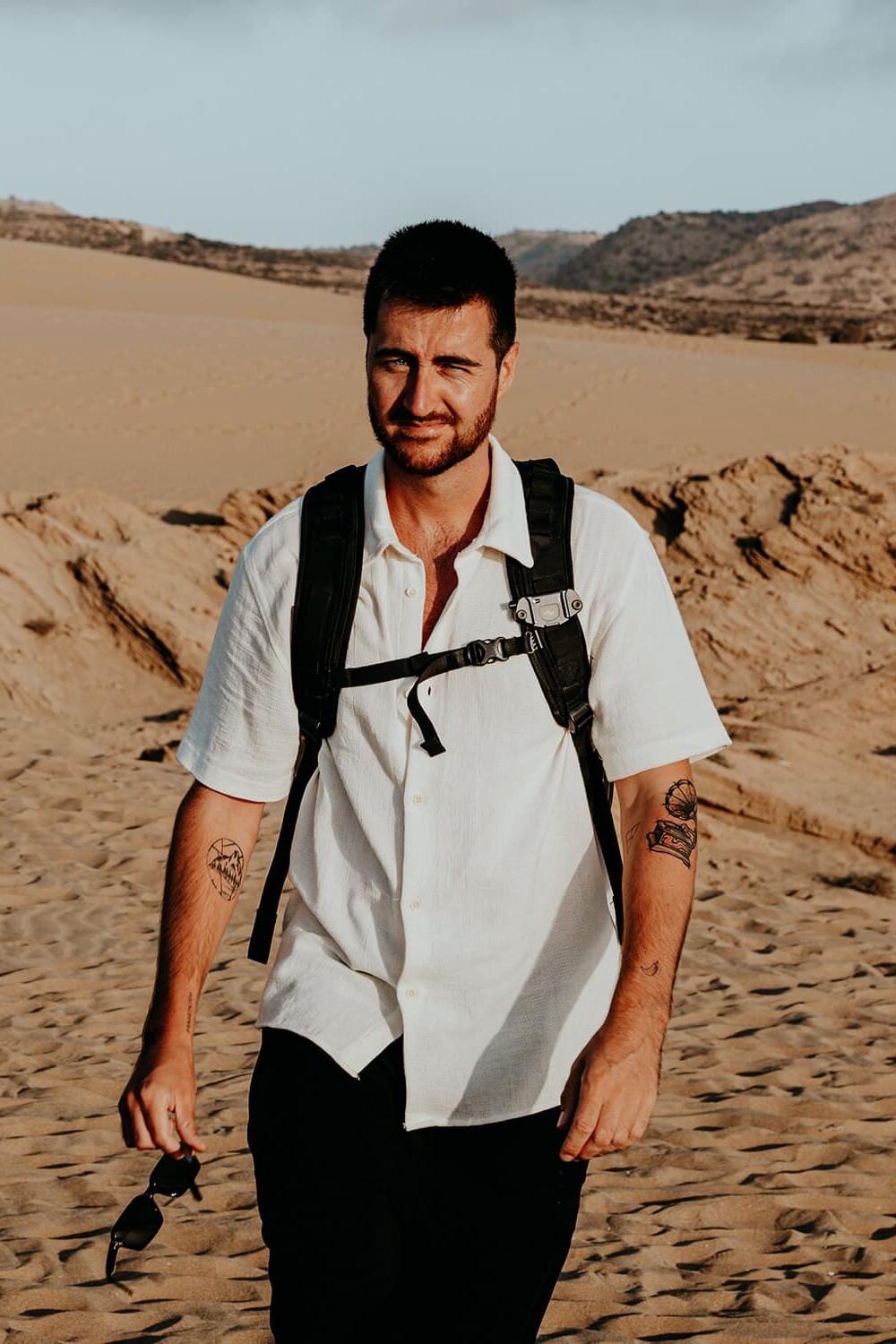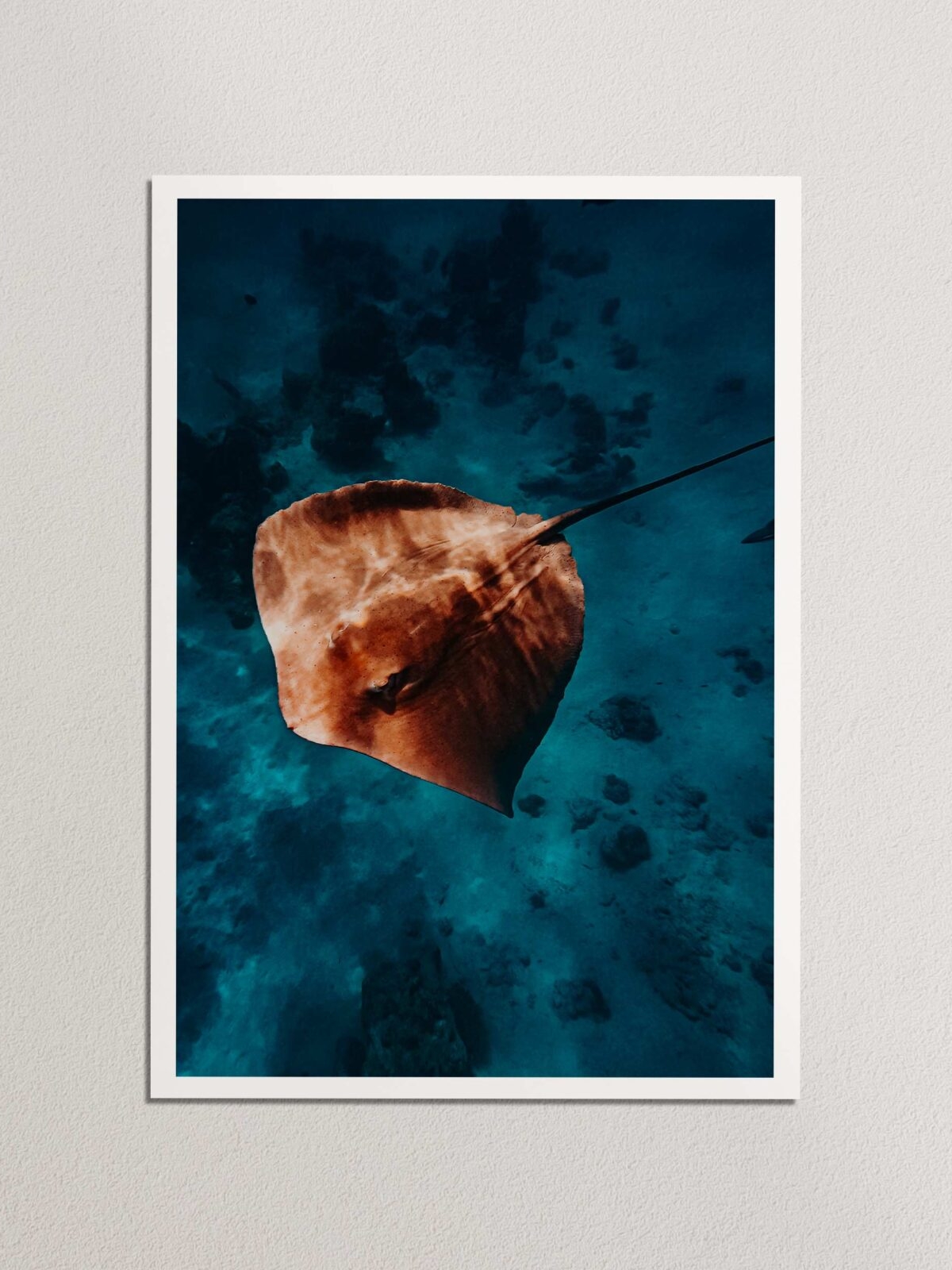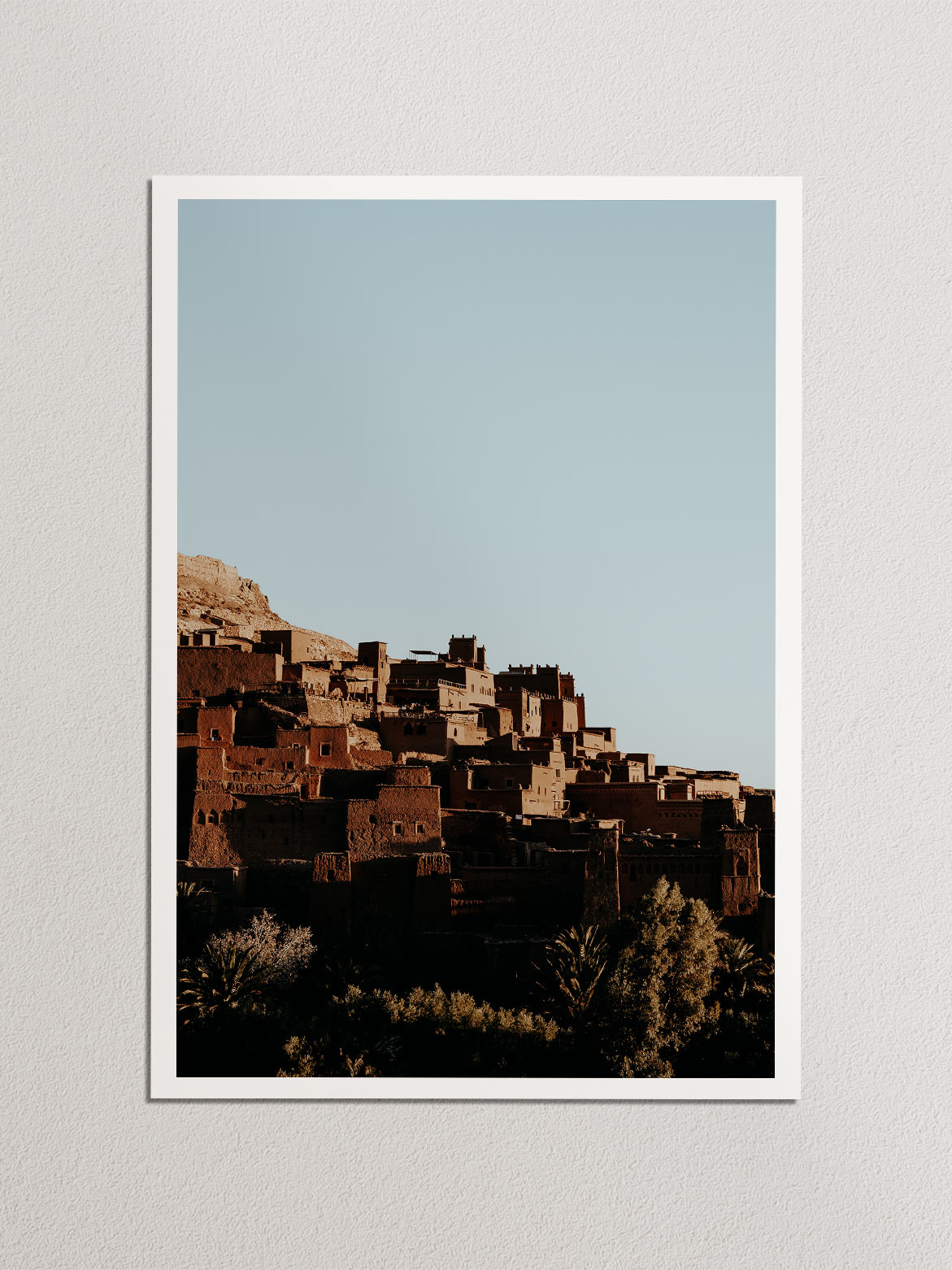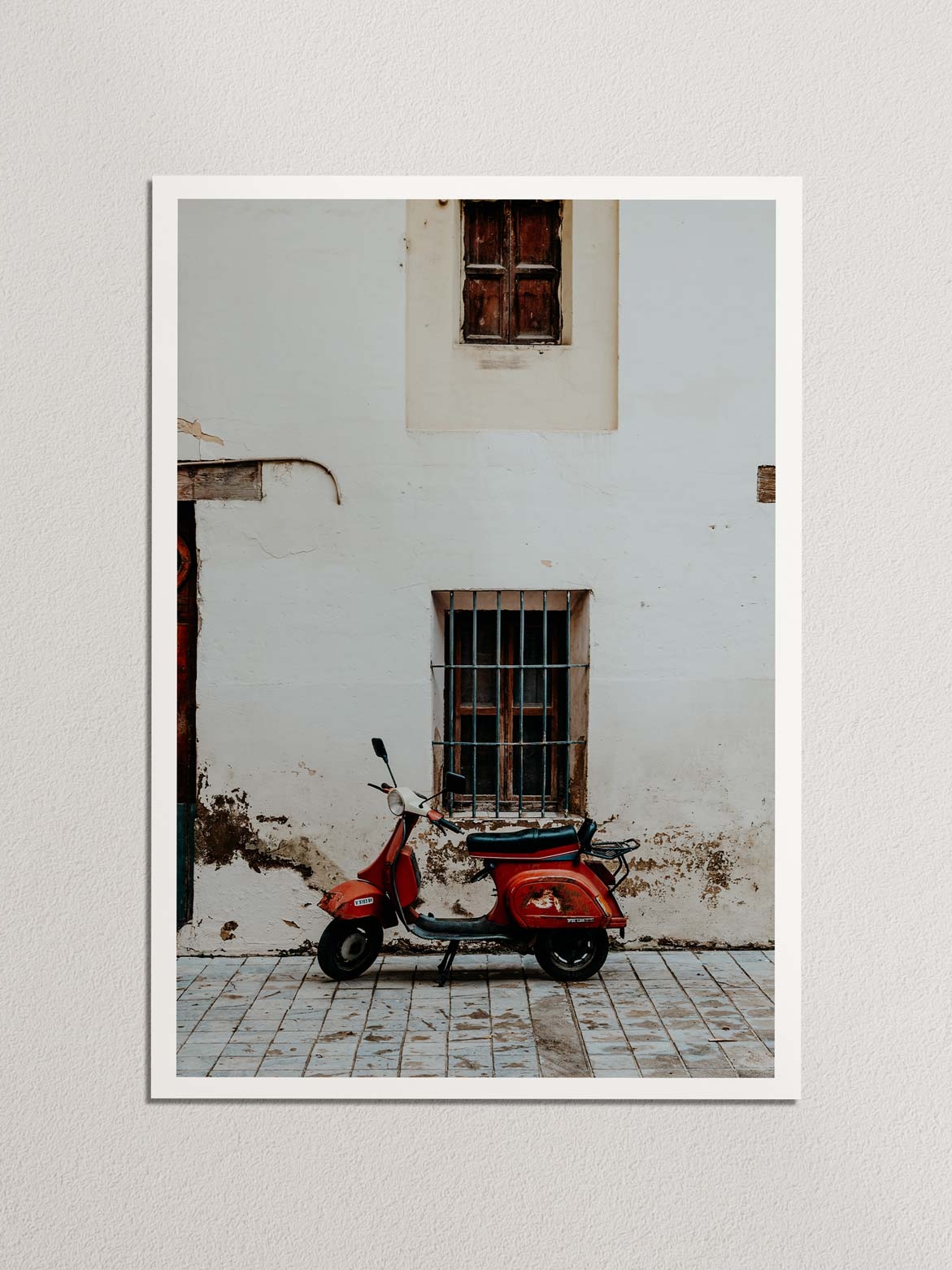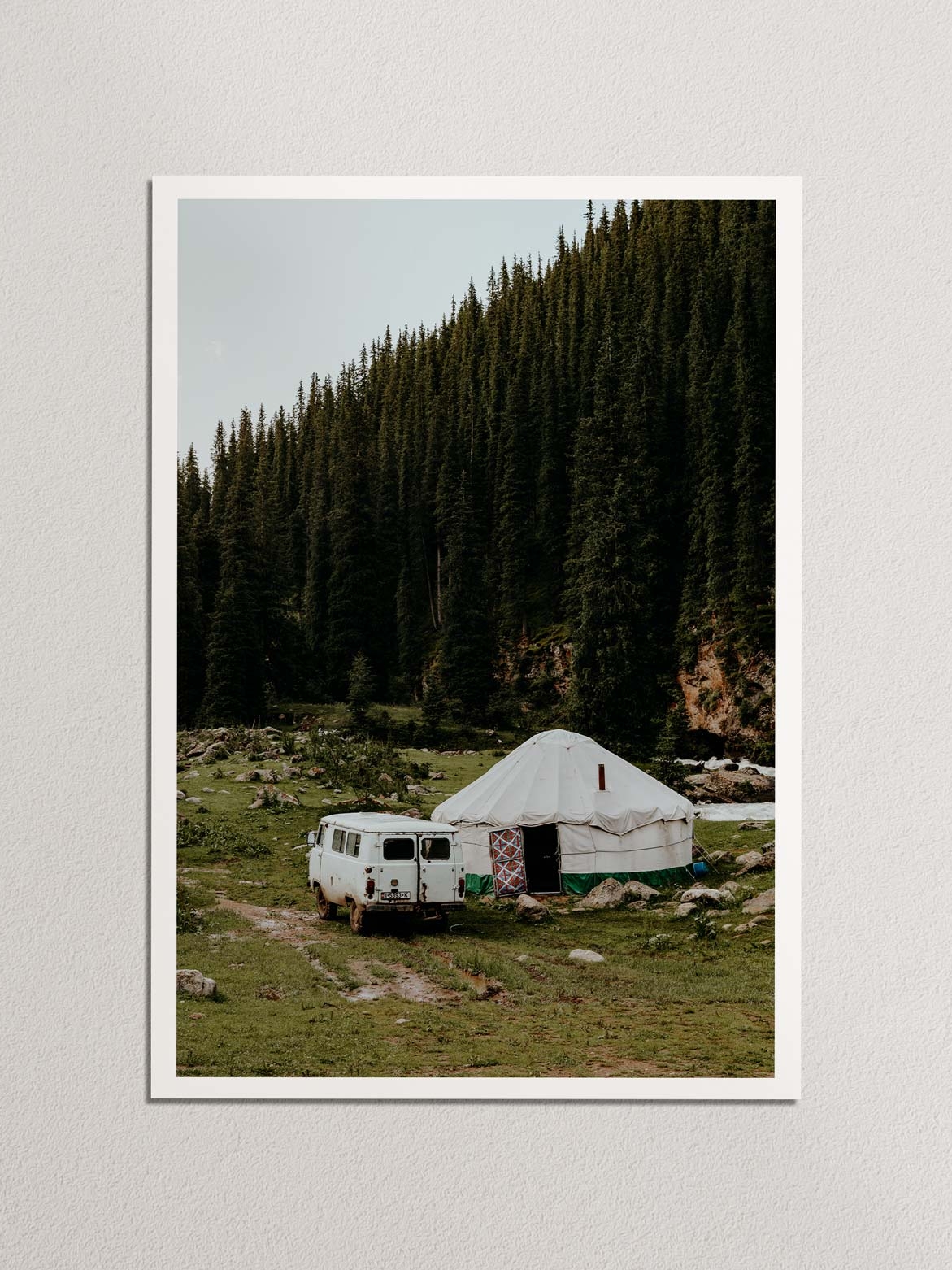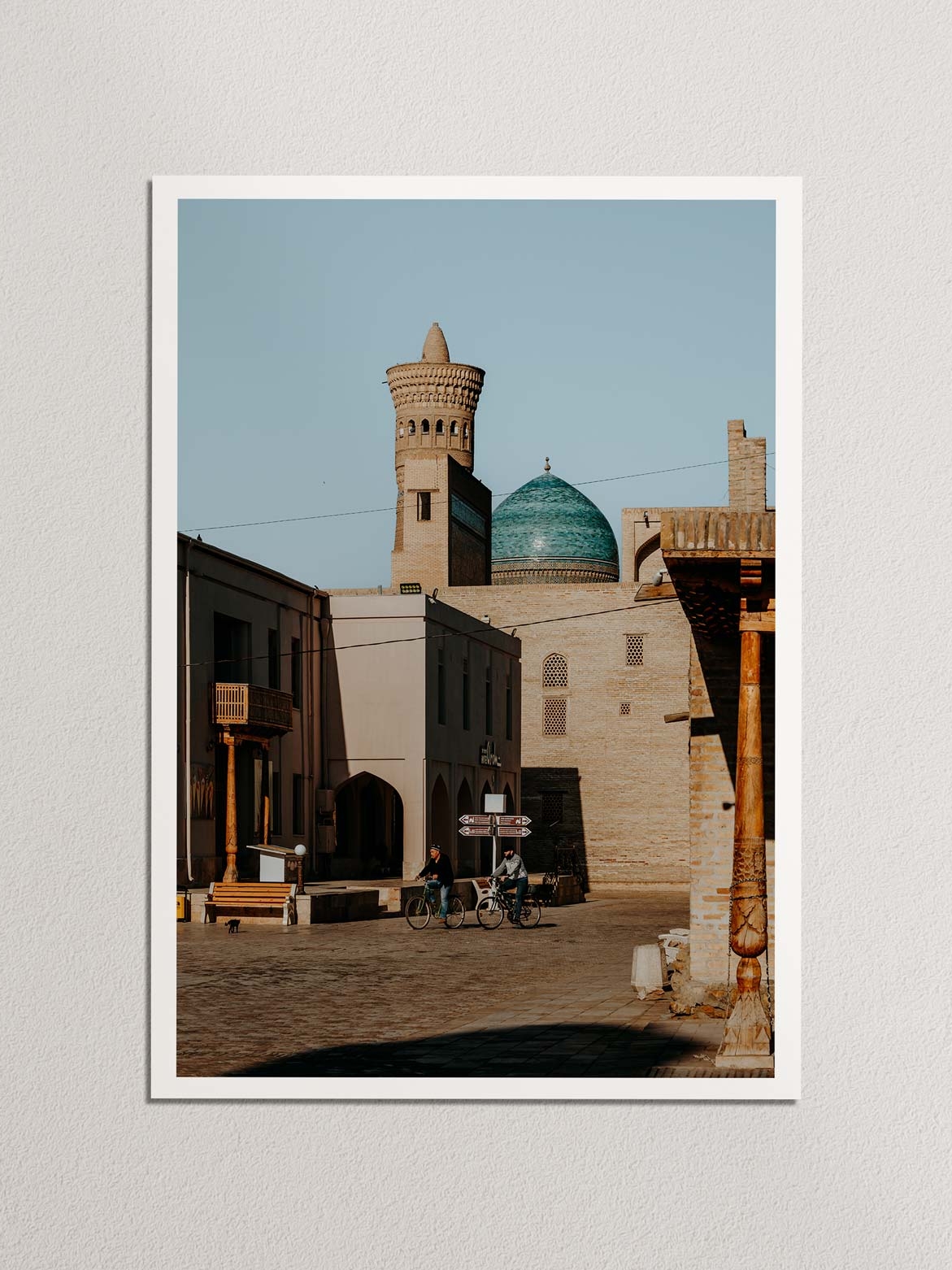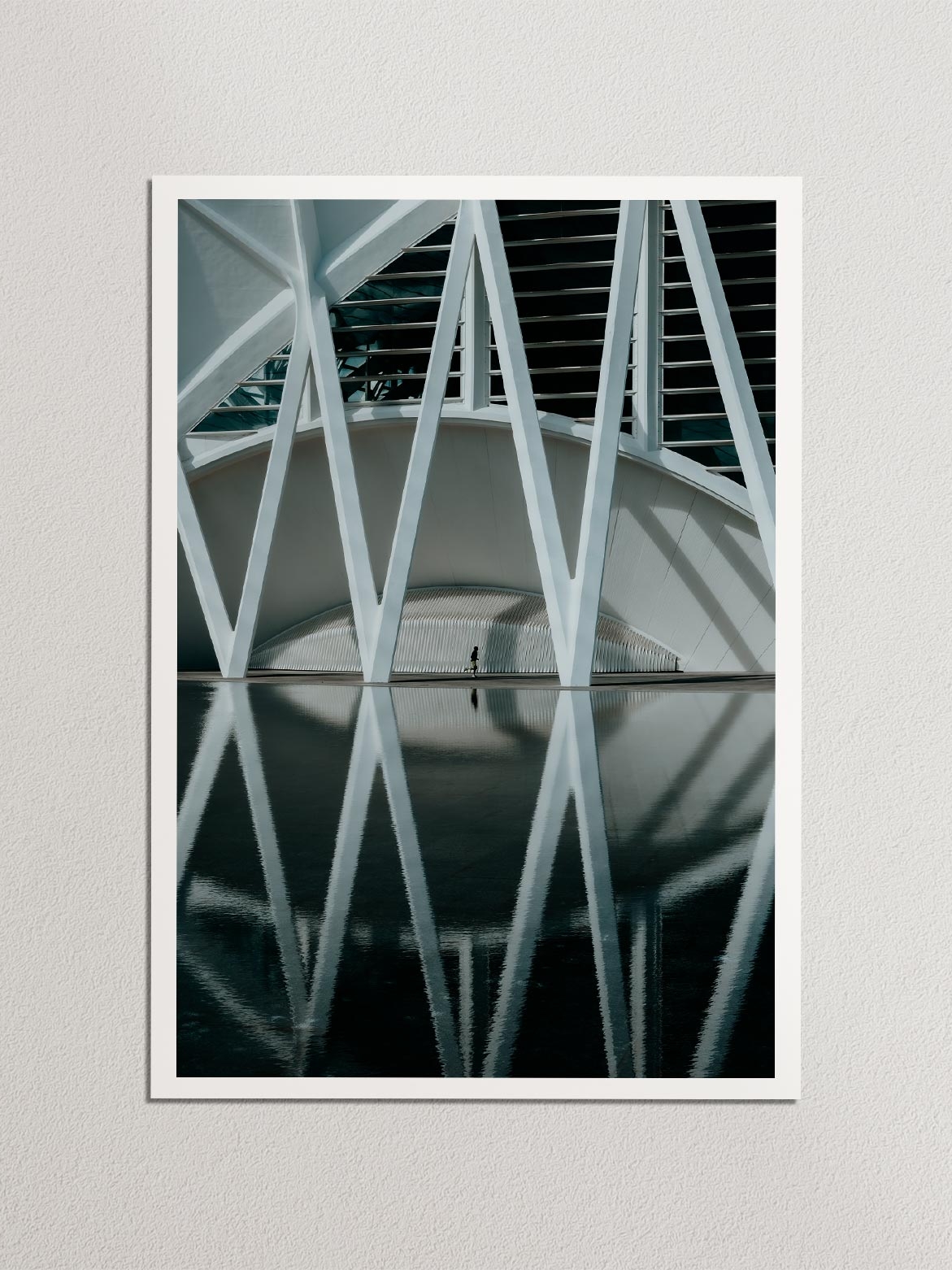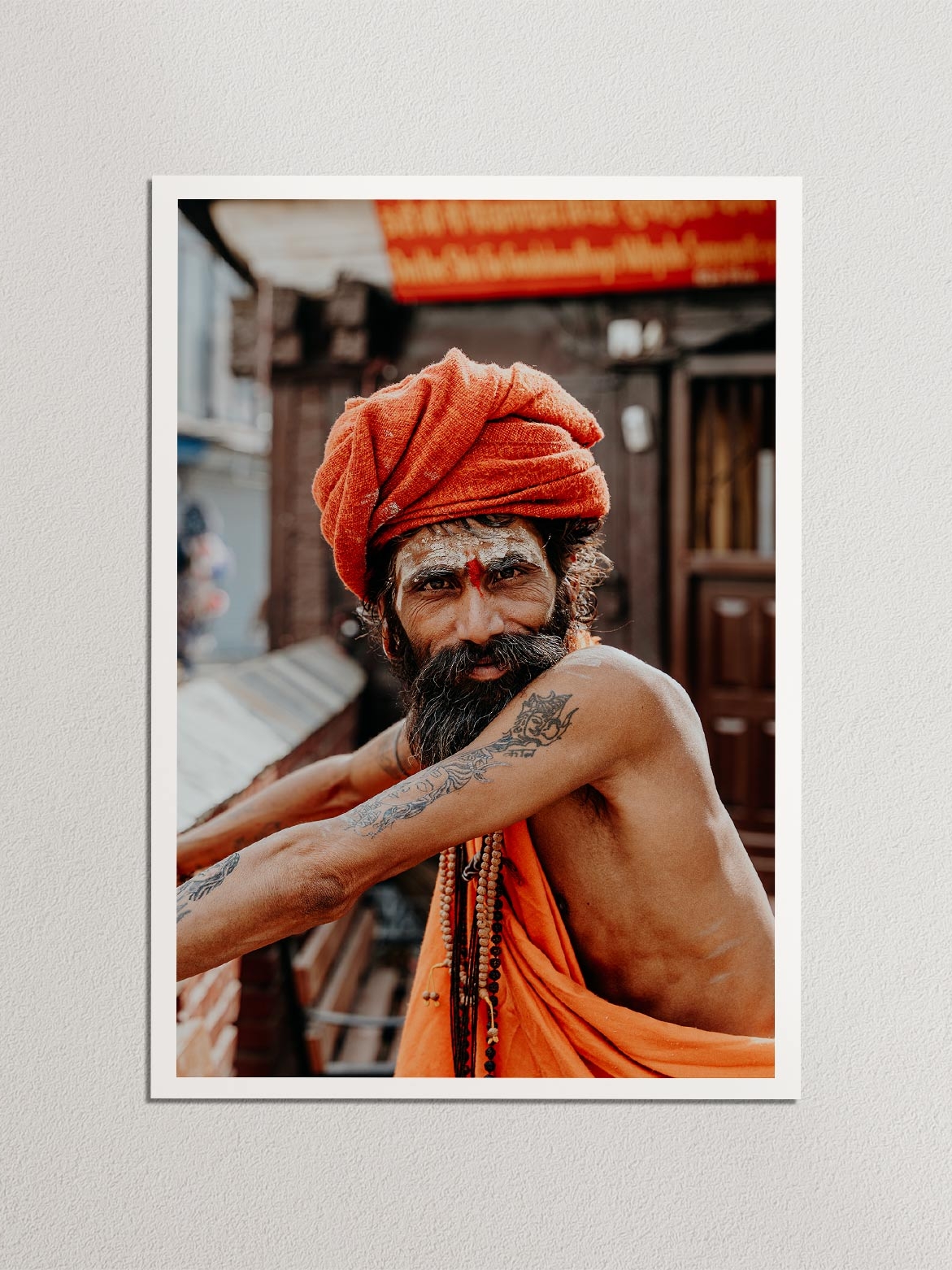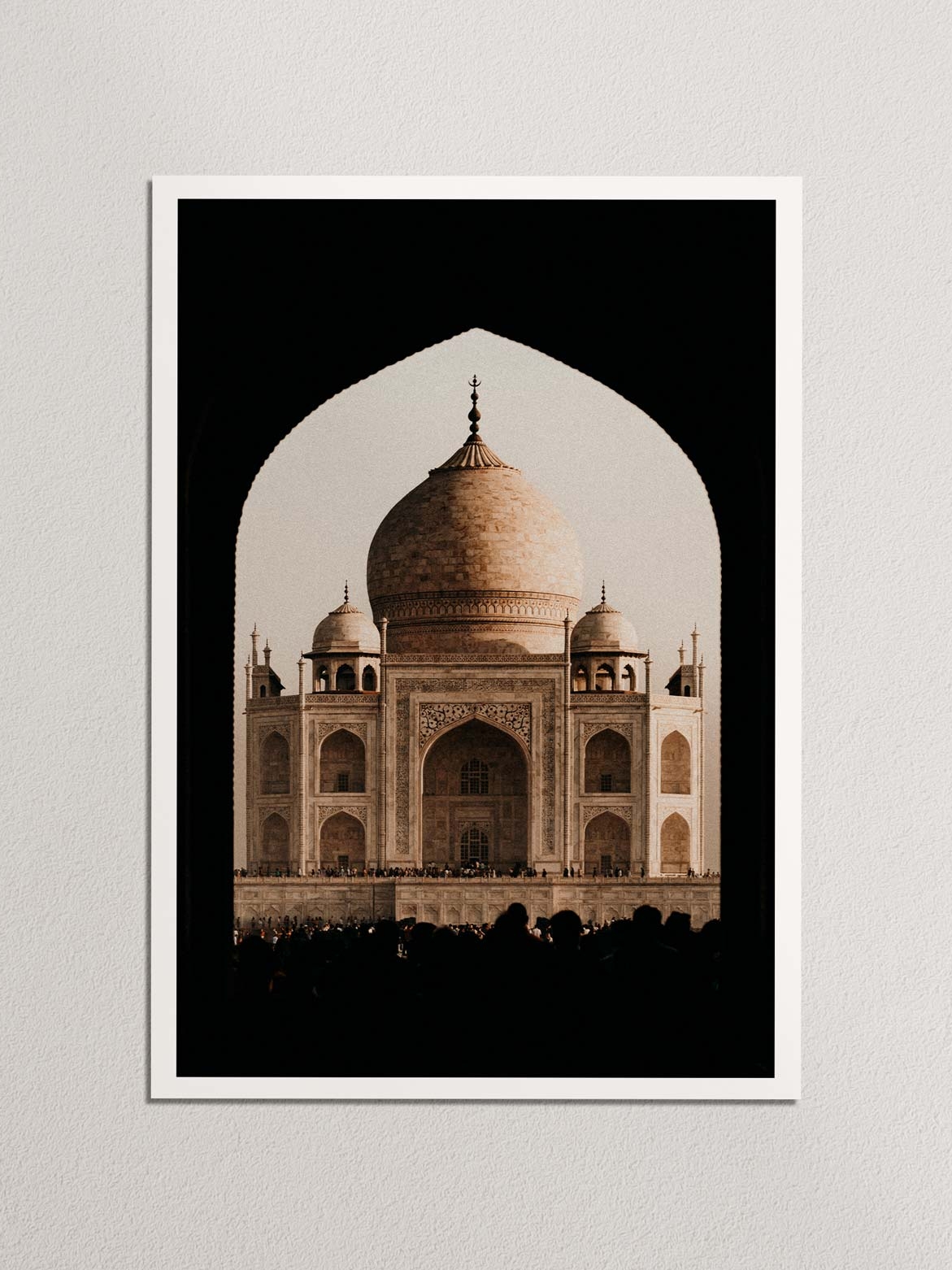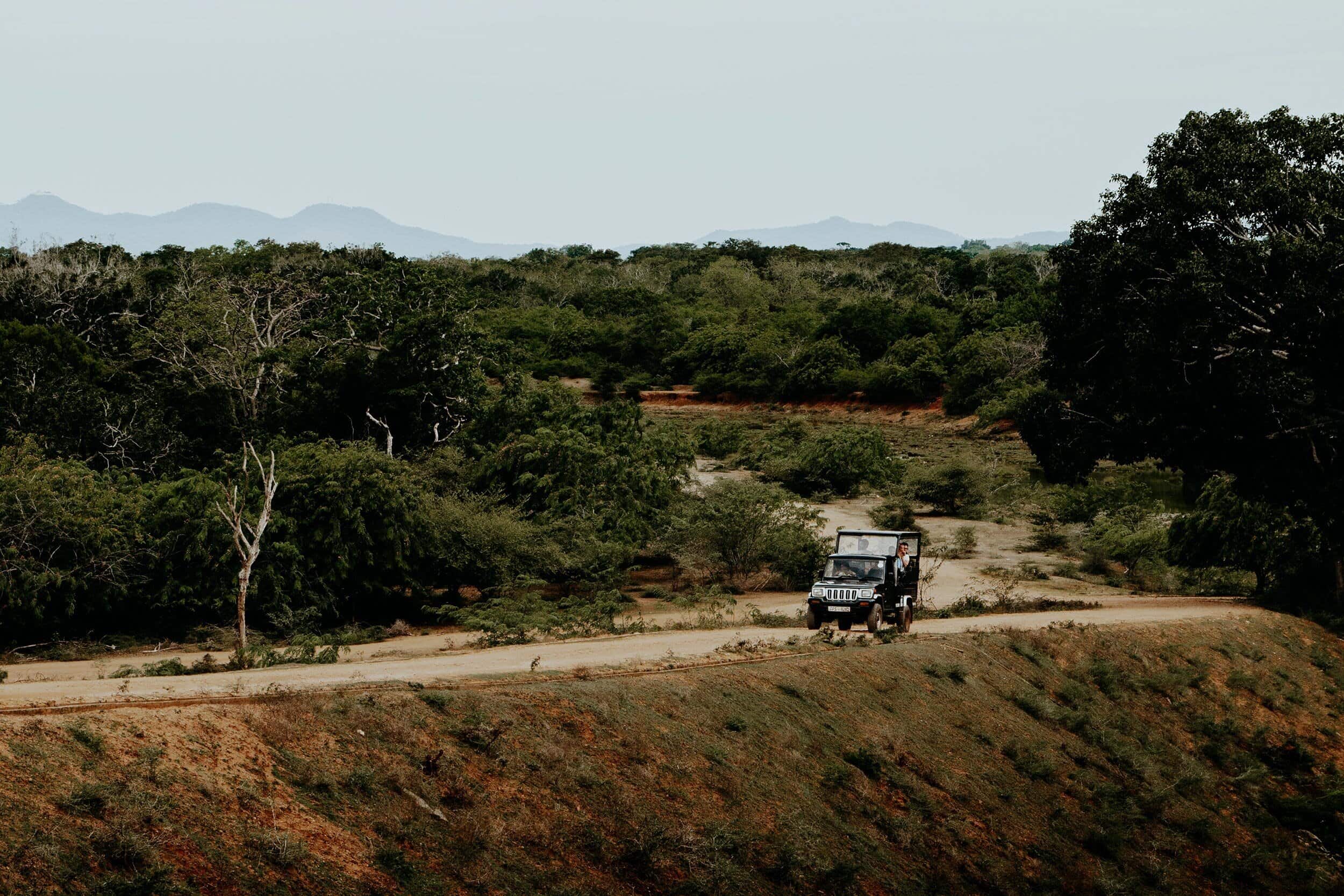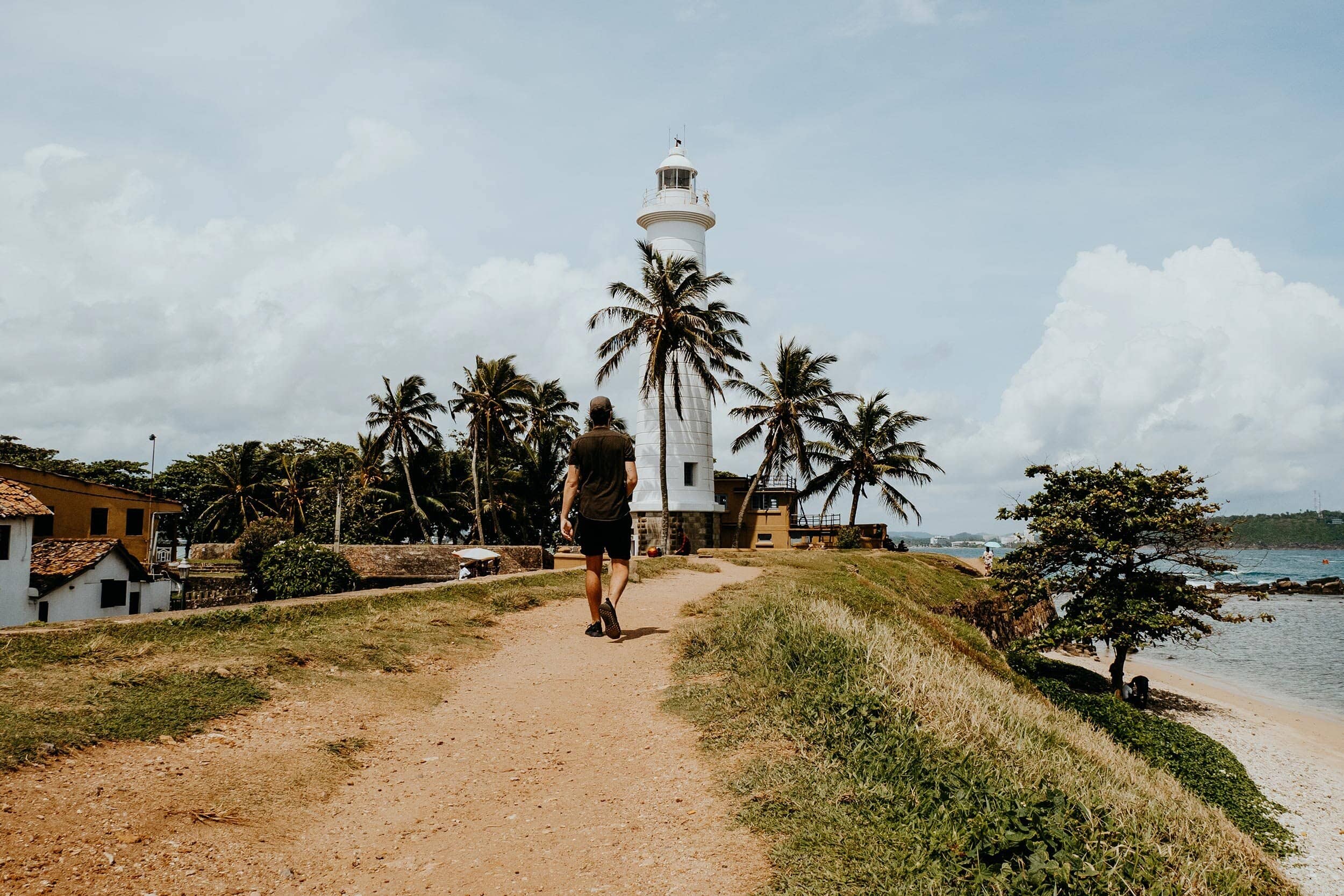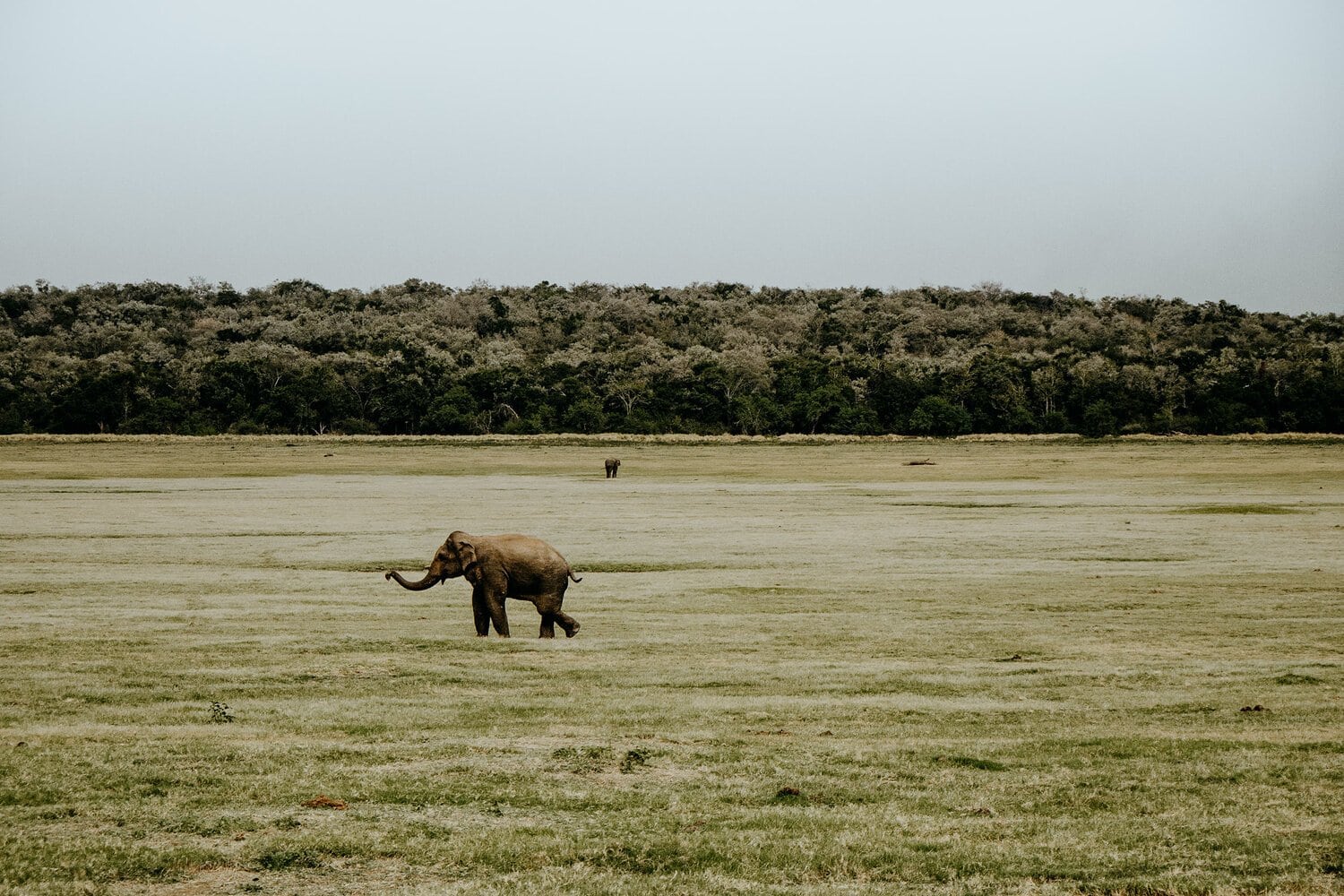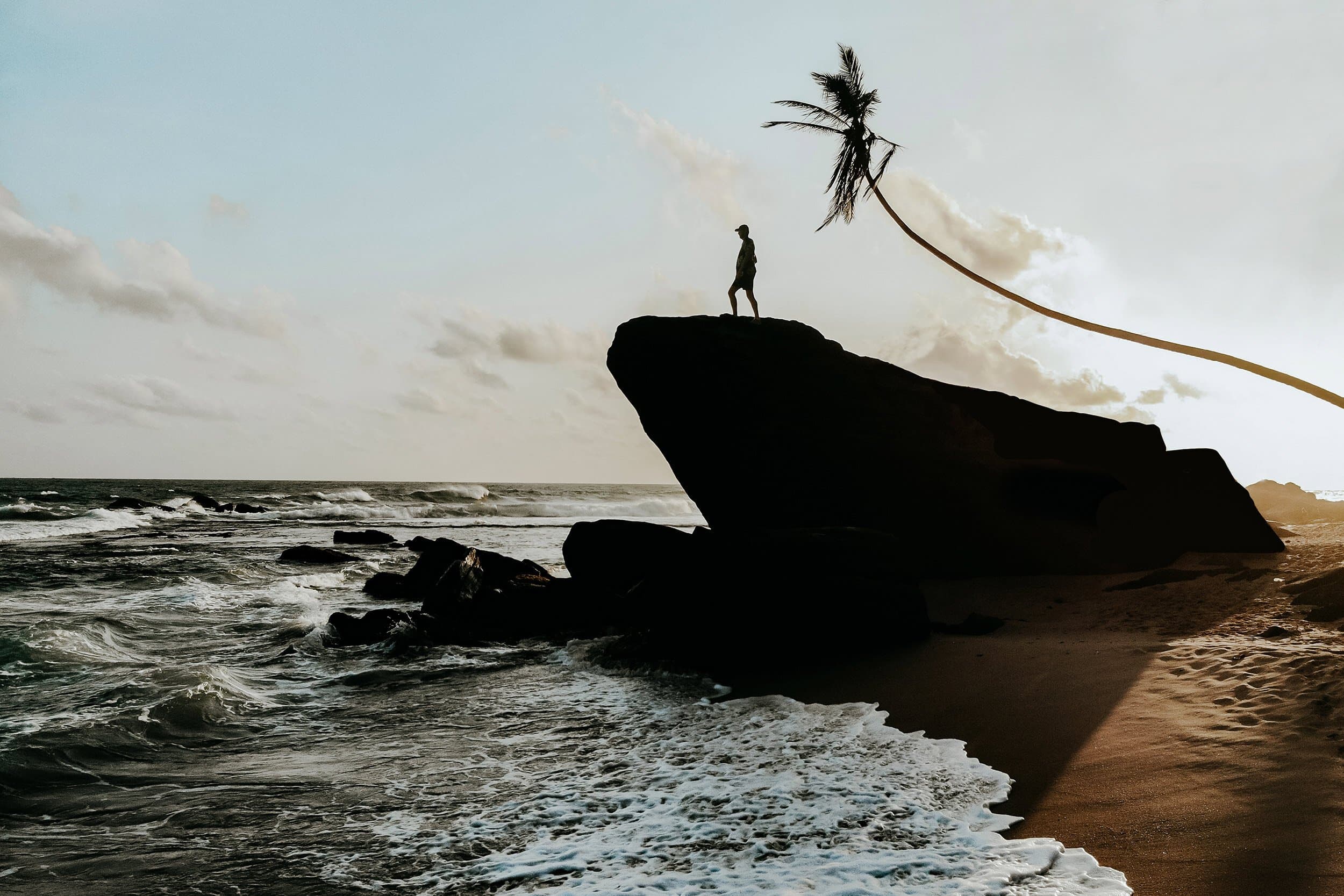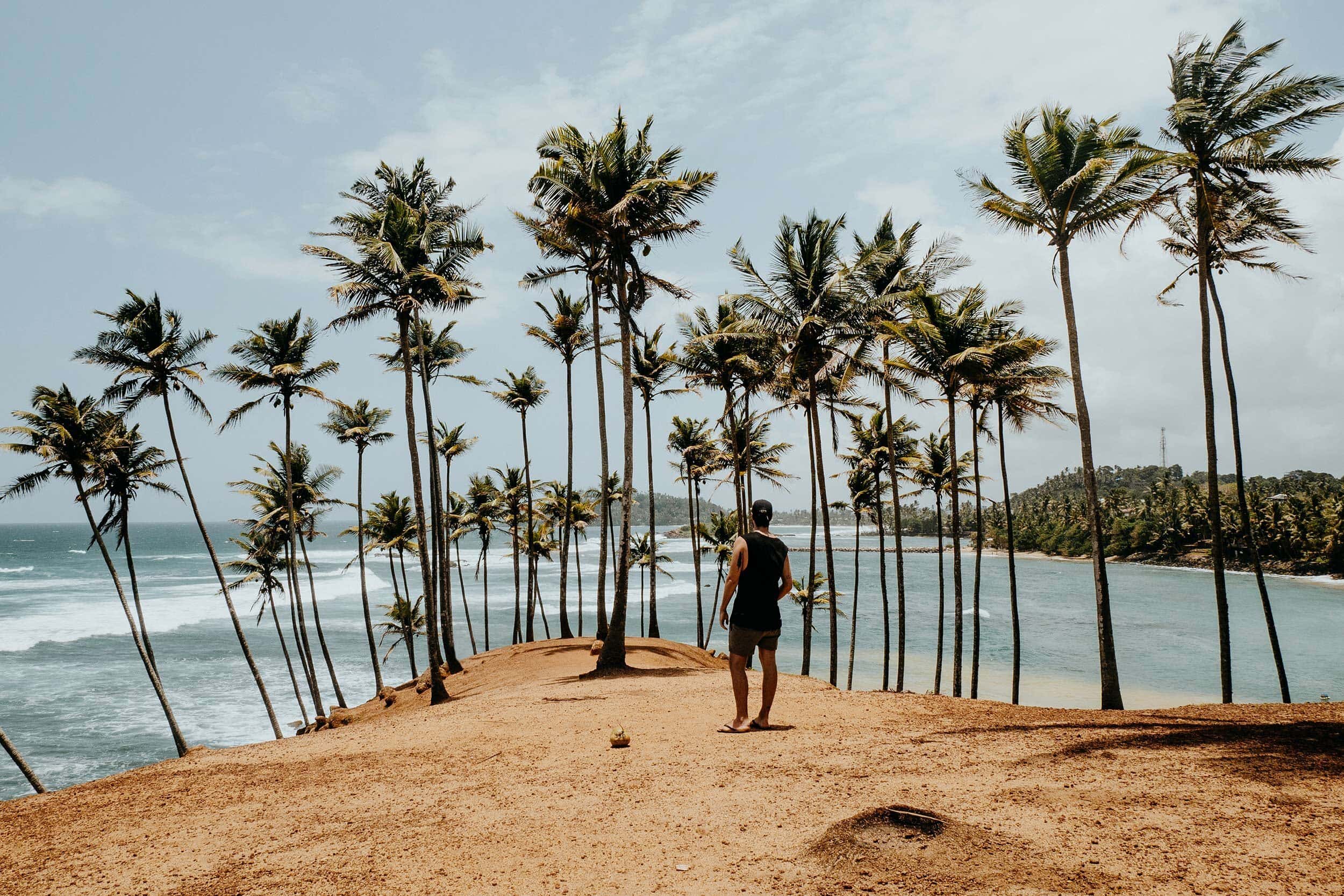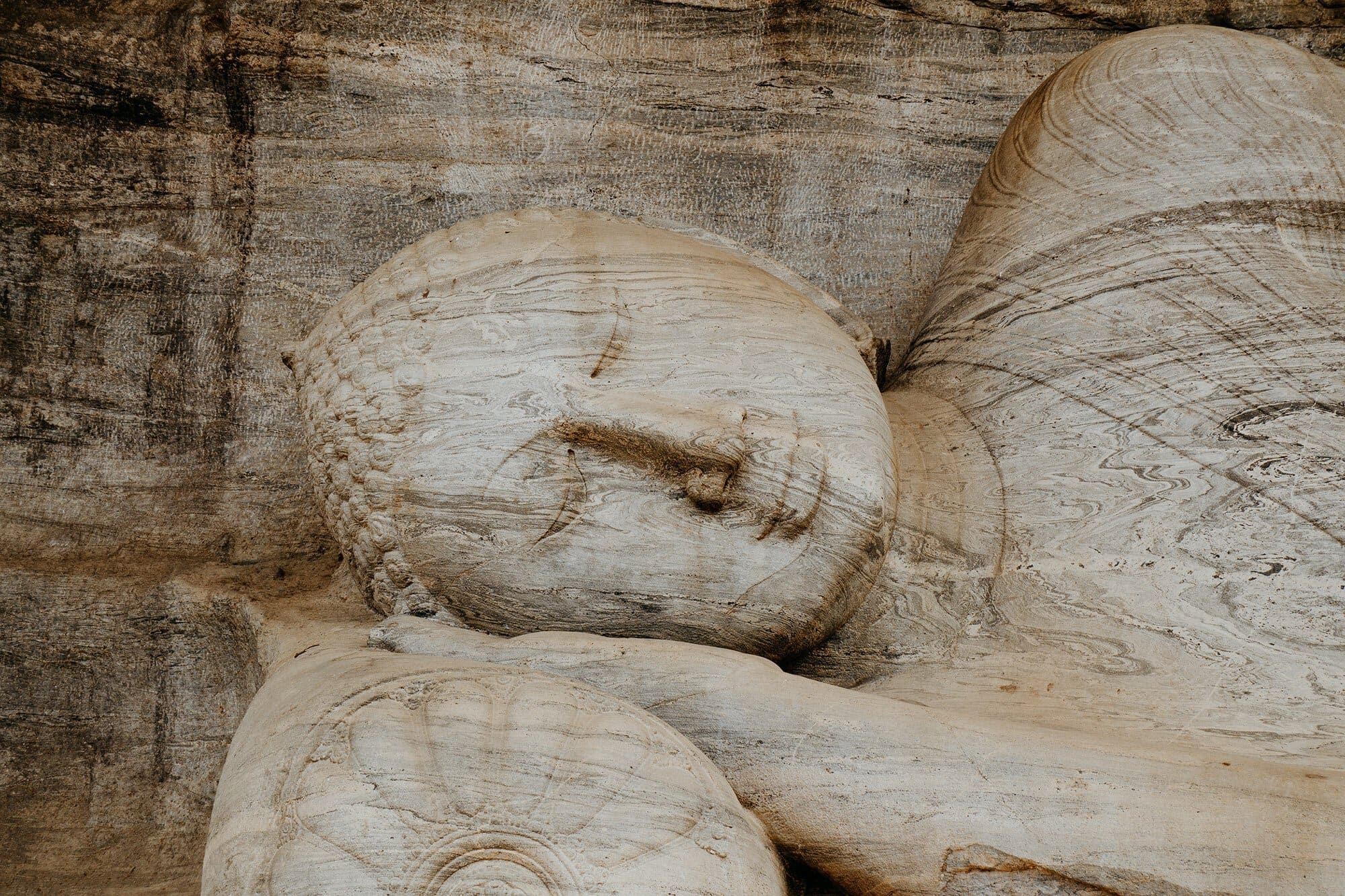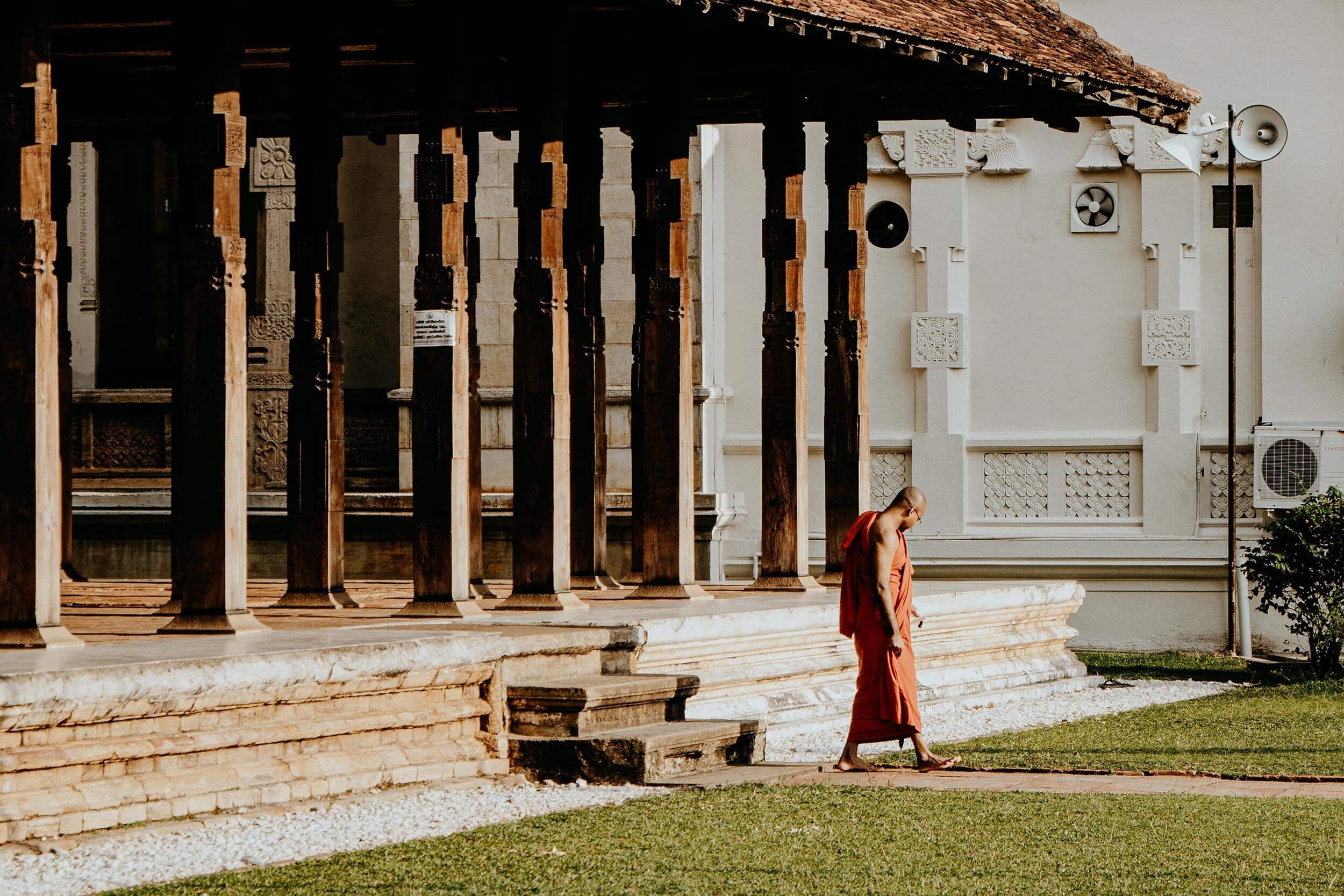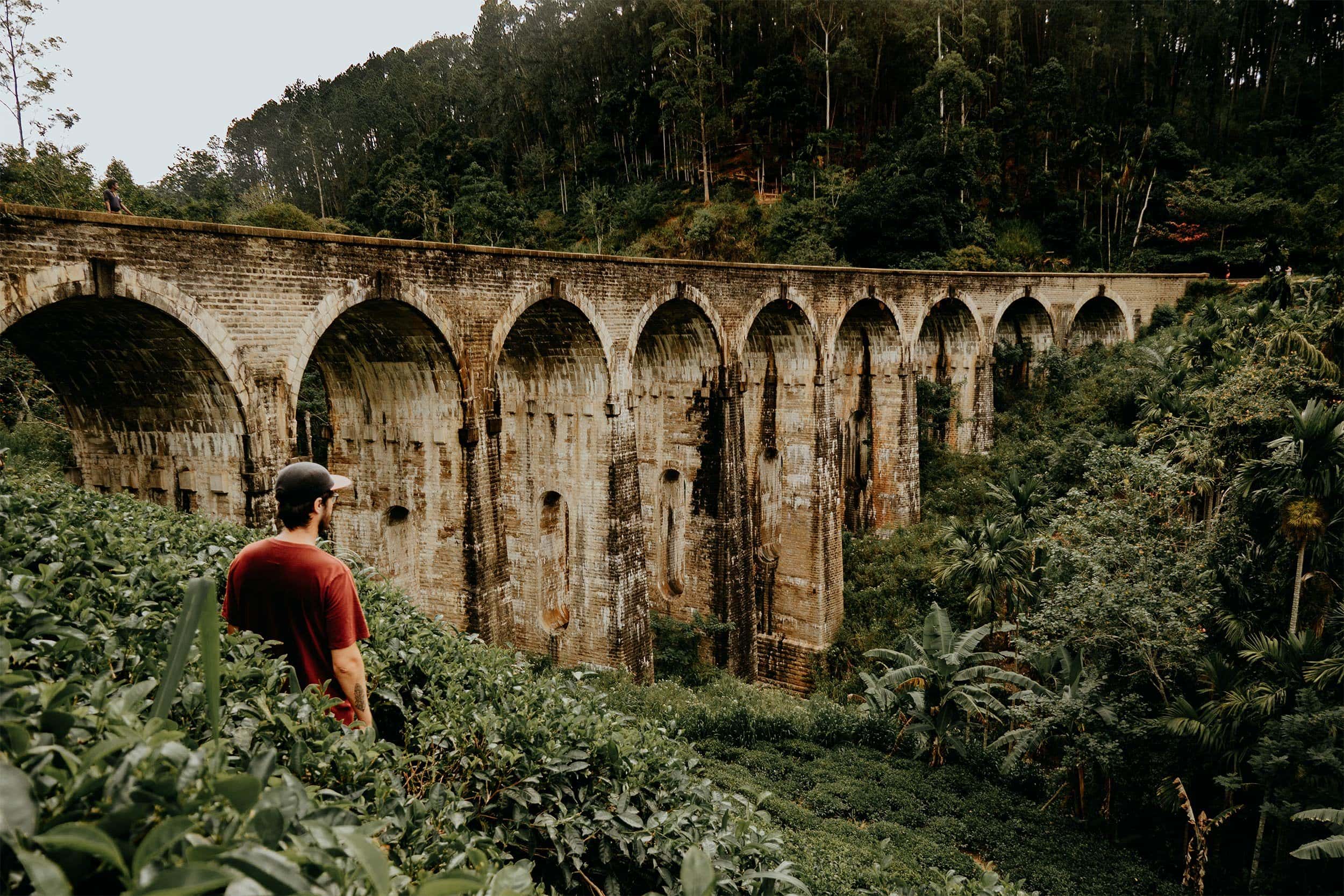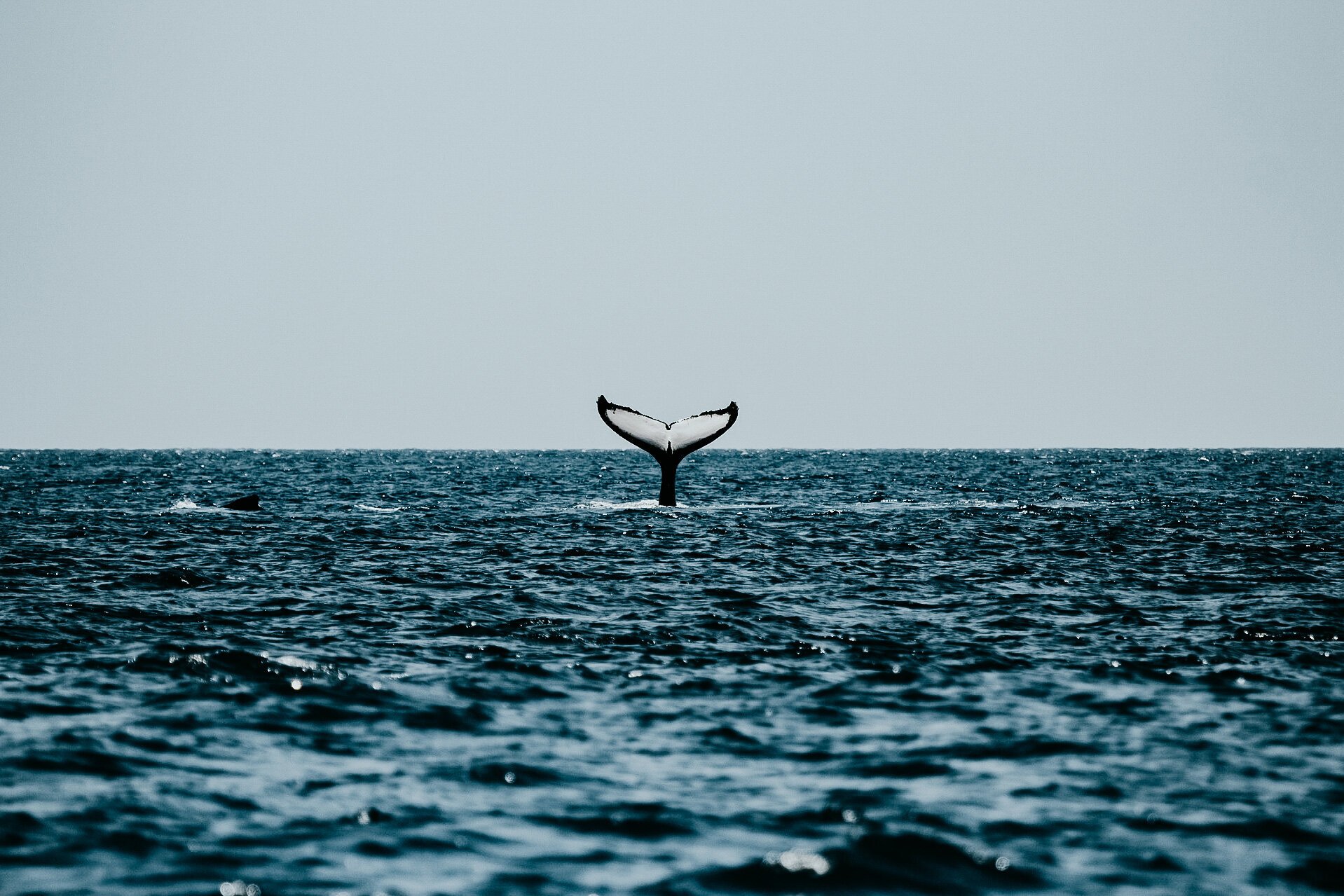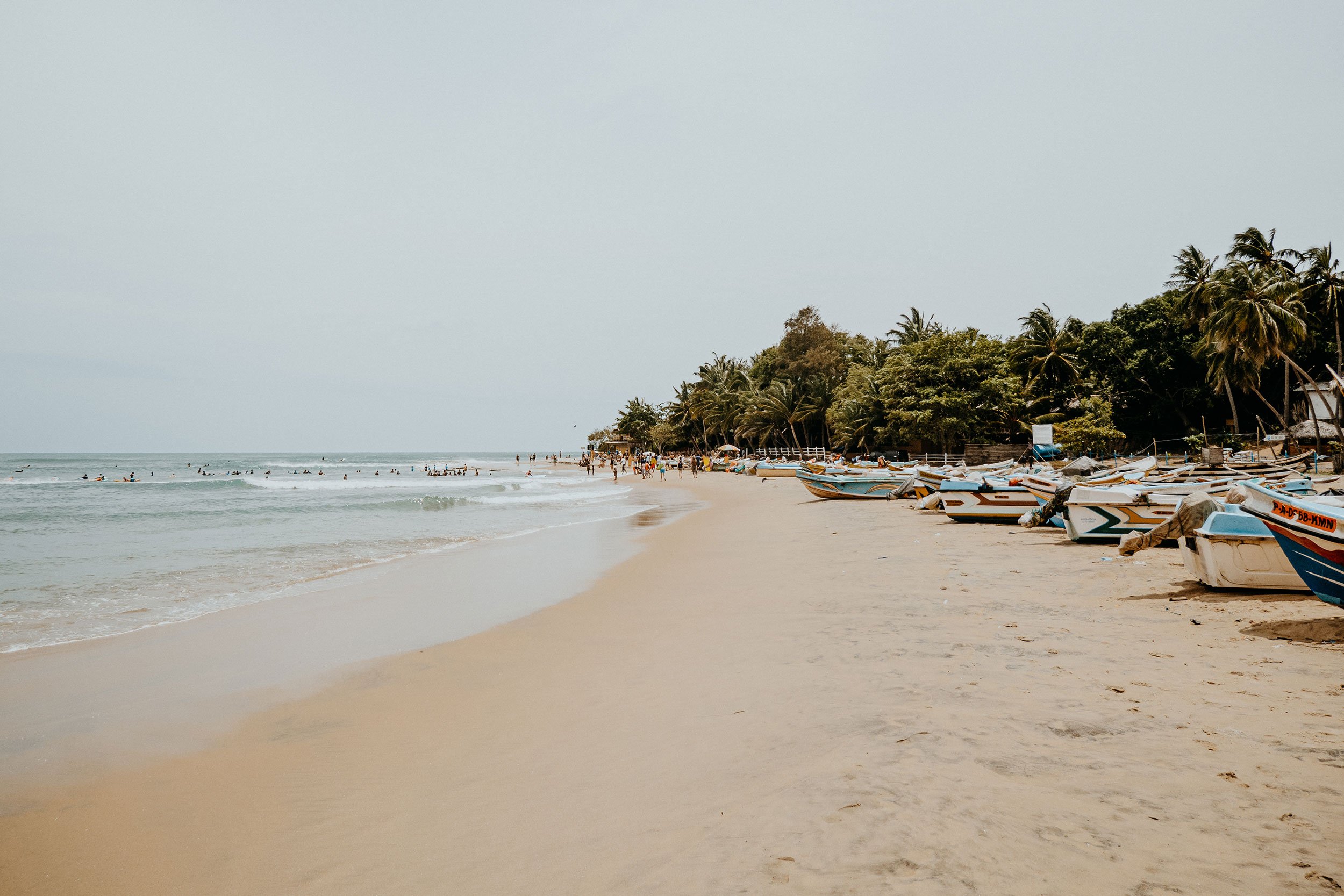Uncover the absolute best of Sri Lanka with this detailed 3-week itinerary. This itinerary covers all the best things to see and do – including the best beaches & surf breaks, must-see attractions, and impressive ancient World Heritage Sites.
You’ll be hard-pressed to find an island that amazes travellers as much as Sri Lanka.
Sri Lanka’s natural beauty is unrivalled – from the beloved gold-sanded beaches on the southern coast to mysterious mountain towns in the idyllic hill country to the dense, wildlife-rich jungles of Yala National Park.
There is simply a myriad of reasons to travel to Sri Lanka, and the world’s most scenic train ride is absolutely one of them. Not to mention that Sri Lanka occupies some of the most vibrant cultural heritage sites, including a colonial seaside fortress, lush tea plantations, and multiple ancient cities which include Kandy, Polonnaruwa and Sigiriya.
You could easily say that Sri Lanka’s unique experiences and breathtaking landscapes go hand in hand, and it’s my intention to help you plan, and make the most out of your journey. I’ve put together the best possible itinerary to spend 3 weeks in Sri Lanka.
My 3-week Sri Lanka itinerary is a detailed introduction and covers all the best things to see and do – plus additional guides that help you throughout your trip. Now the only thing left for you to do, is soaking up beautiful Sri Lanka and its magical experiences.
If you choose to use any of the links on this page, I may receive a small commission at no extra cost to you. By using these links, you’ll have a direct impact on WTSW and my ability to continue to create free insightful travel content for you. If you find any of my tips useful, you can support me by buying a virtual coffee here.
The New Where the Souls Wander Print Store
After putting out my first-ever print collection in 2022, I decided it was finally time to re-open my print store, and I couldn’t be happier with the result.
Whether you’re looking to grab a unique piece for your own wall, gift one to a loved one to remind them of a memorable trip together, or simply get your hands on a piece because it provokes a specific memory or feeling, I’d be honoured and grateful if you decide to collect or gift one of my prints.
To celebrate the launch, I’m offering a 20% discount until the 24th of December.
My 3-week Sri Lanka itinerary | Daily Overview
Day 1 | Colombo, Sri Lanka’s somewhat chaotic capital
Sri Lanka’s vibrant capital makes an excellent first destination in your Sri Lanka itinerary, especially if you look at the fact that it is located just 45 minutes from the Bandaranaike International Airport.
With nearly 620,000 inhabitants, Colombo is considered Sri Lanka’s biggest city. Unfortunately, this comes with the side note that the city is rather intoxicating, and often too overwhelming to fully enjoy.
Although Colombo isn’t the most captivating city in terms of must-see attractions, I think you shouldn’t just skip over it. I would recommend spending at least one day here to experience the hustle and bustle of Sri Lankan everyday life.
COLOMBO | MUST-SEE ATTRACTIONS
The Red Mosque (Jami Ul-Alfar Mosque) | Located in the narrow streets of Pettah, Jami Ul-Alfar Mosque is one of the few must-see attractions in Colombo. The mesmerising mosque is charmed by a distinct colour pattern, towering minarets, and ornate domes that can be seen from quite a distance. It’s utterly breathtaking to see the towering mosque appear while strolling through the lively streets of Pettah.
Barefoot | Barefoot is an iconic shop, gallery, bookshop, and courtyard café in the heart of Colombo’s spirited fort area. The vibrant café is tucked away in a garden of calm and serves a wide variety of delicious dishes, while the shop sells traditional artisan crafts like fabrics, linen, clothes and gifts. Barefoot also houses a unique bookstore that offers a great selection of books on art, architecture, photography and spirituality.
The streets of Pettah | Pettah is considered one of the oldest districts in Colombo and a stroll through its narrow streets is quite the experience. The Pettah market is an excellent area to get a feel for the country and its people. While you’re there, make sure to grab a bite at one of the many street food stalls. Bear in mind that these streets are very chaotic and overwhelming, therefore it is best to give in, and go with the flow.
COLOMBO | THE ESSENTIALS
Where | Colombo
Where to stay in Colombo | I recommend Lavonca Boutique Hotel, a small, comfortable hotel in the heart of Colombo. Alternatively, use booking.com to find accommodations in Colombo.
How to get around Colombo | Colombo is quite an extensive city and somewhat challenging to navigate by foot. The easiest way to get around is by making use of the famous tuk-tuks, which are found at about every corner. To avoid unnecessary costs, use the PickMe app, or arrange a price with your tuk-tuk driver in advance.
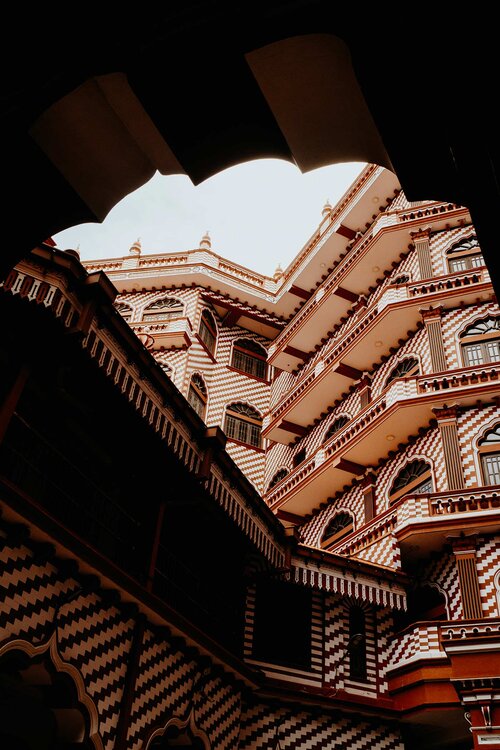
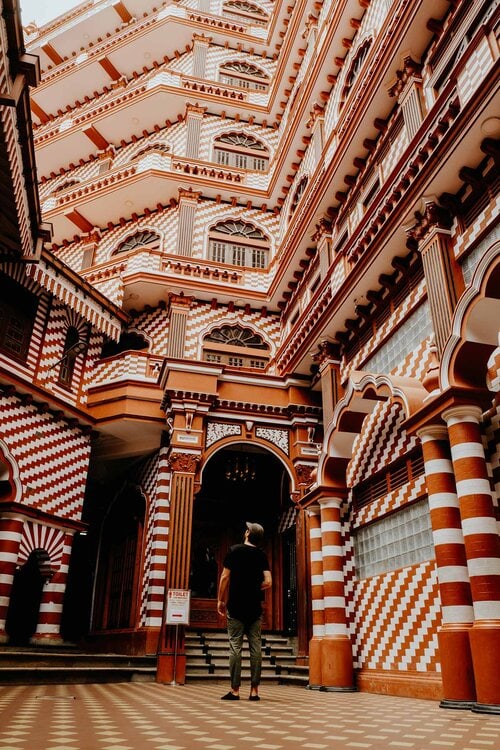
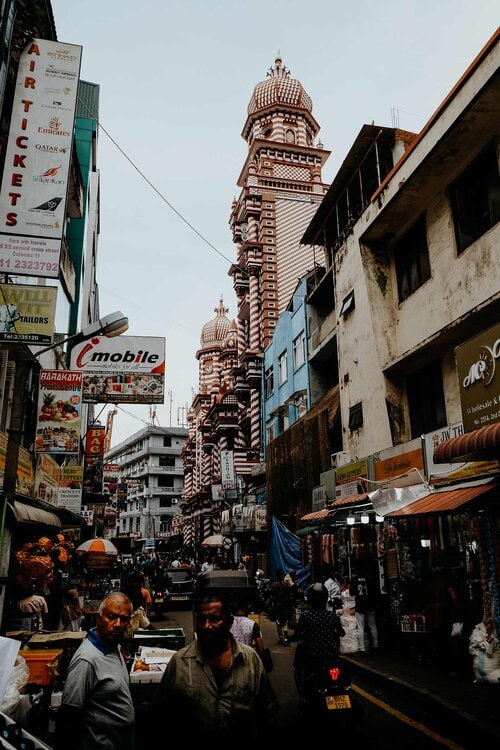
Day 2 – 3 | Galle Fort, a colonial seaside fortress
After experiencing the hustle and bustle in Colombo, it’s time to embark on a scenic train journey in the direction of Sri Lanka’s spirited south coast.
During this 3-hour journey from Colombo Fort to Galle, you’ll get spoiled by views of vivid sceneries, as well as authentic local villages and the island’s golden-sanded coastline.
Once you arrive in Galle, you’ll quickly come to realize why it is such a beloved destination. The seaside town was once of significant importance and is still largely visited for its historical Galle Fort, a UNESCO World Heritage site that continues to amaze travellers.
The Dutch Colonial fort in Galle has a rich and captivating character. With lively, narrow streets, decaying colonial buildings, trendy contemporary cafés, and an appealing, tropical ambience, Galle Fort is, in my opinion, a must-see in any Sri Lanka itinerary.
GALLE FORT | MUST-SEE ATTRACTIONS
Galle Fort Lighthouse | The Galle Fort Lighthouse is framed by tropical palm trees and is one of the many picture-perfect scenes in Sri Lanka. For that reason alone, it’s one of the things that shouldn’t be missed within the ramparts of the historical Galle Fort.
The Galle Markets | Just outside Galle Fort, you’ll notice several authentic markets that sell a wide variety of fruit, fish and spices. By visiting these local markets you have an excellent chance to taste delicious tropical fruits, and stock up on high-quality spices – plus you become familiar with Sri Lankan culture.
Galle Fort interior | Taking a stroll through the narrow, colonial streets of the fort was by far one of the best things I did during my time in the Galle Fort. By doing so, you come across a collection of decaying colonial buildings, which makes it seem as if you’re living during the VOC era.
GALLE FORT | THE ESSENTIALS
Where | Galle Fort, Galle
Where to stay in Galle Fort | Galle has no shortage of good accommodations, both in and outside the fort. I would highly recommend The Heritage Hotel Galle Fort and 50 CHURCH STREET – GALLE FORT. Alternatively, use booking.com to find accommodations in Galle.
How to get from Colombo to Galle Fort | The easiest and most scenic travel option is from Colombo Fort to Galle by train. The direct train operates frequently (about 10 times a day) and takes around 2.5 – 3 hours.
How to get around Galle Fort | Galle Fort is easily explored by foot. If your accommodation is slightly remote, make use of the accessible tuk-tuks.
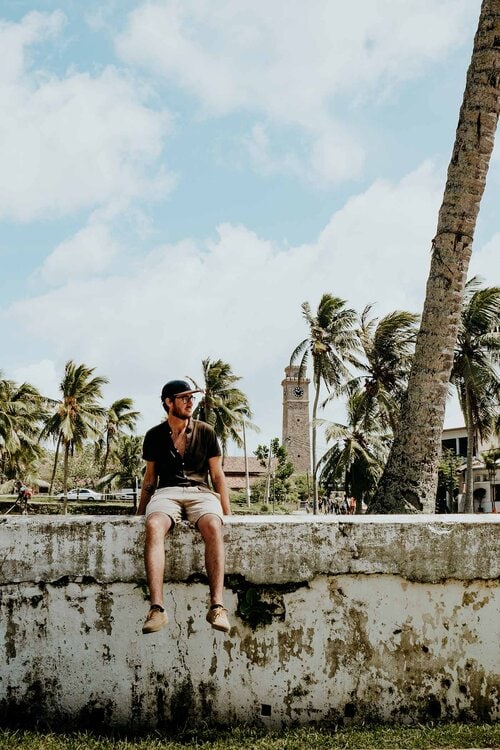
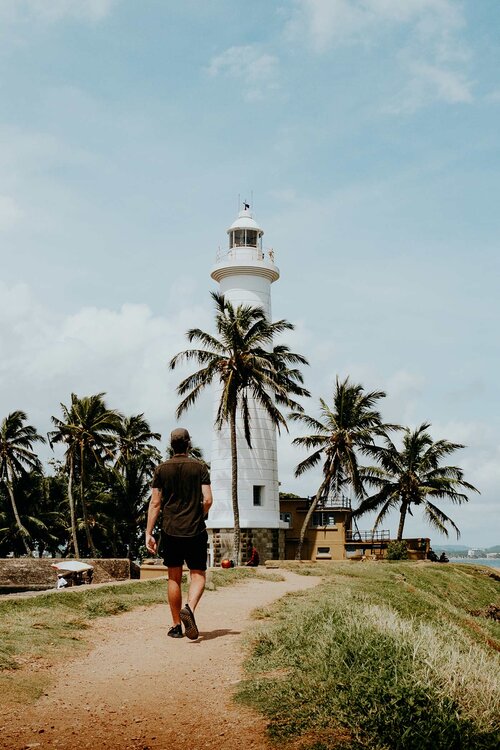
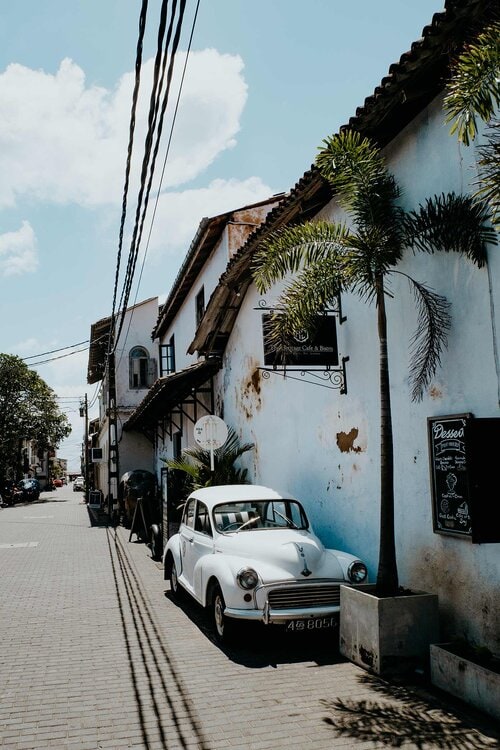
Day 4 – 5 | Unawatuna, Sri Lanka’s backpacker beach town
Situated at only a 10-minute drive from Galle lies Unawatuna, one of Sri Lanka’s most popular coastal towns and the first proper beach destination in this itinerary.
Unawatuna has rapidly become a fixture for travellers who visit Sri Lanka and trust me, that’s for a good reason. The trendy beach town is home to a laidback backpacker vibe and has no shortage of palm-fringed beaches, contemporary cafés, and irresistible beachfront restaurants.
Accordingly, I would recommend spending a few nights here, it has some of the island’s most beautiful beaches after all.
UNAWATUNA | MUST-SEE ATTRACTIONS
Dalawella Beach | Dalawella Beach is an extremely picturesque stretch of beach and without a doubt one of my favourite beaches in Sri Lanka. The charm that defines Dalawella Beach is realized by a scenic rock formation, exciting beach swings and plenty of low-bending palm trees. Make sure you visit early morning or during sunset.
Skinny Tom’s Deli | Only head over to Skinny Tom’s Deli, if you’re keen on tasting the best brunch in town. This European-style café has a great reputation on the southern coast and serves life-changing bacon, dhal & egg hoppers, fresh eggs benedict toast, and delicious artisanal cakes and desserts.
Jungle Beach | Although it’s located slightly off the beaten path, Jungle Beach is an exceptional place for an afternoon of relaxing, swimming and tanning. Make sure you take a look at the Japanese Peace Pagoda, which is situated in the lush jungle right above the secluded beach.
UNAWATUNA | THE ESSENTIALS
Where | Unawatuna
Where to stay in Unawatuna | Unawatuna has great accommodations in every price range and I would highly recommend Levels Unawatuna and Green Escape Unawatuna. Alternatively, use booking.com to find accommodations in Unawatuna.
How to get from Galle Fort to Unawatuna | Take a 10-minute drive by local bus from Galle Fort to Unawatuna. Alternatively, take a tuk-tuk.
How to get around Unawatuna | Unawatuna is easily navigated by foot. If you’re keen to explore the surrounding towns, make use of the affordable tuk-tuks, or rent a scooter.
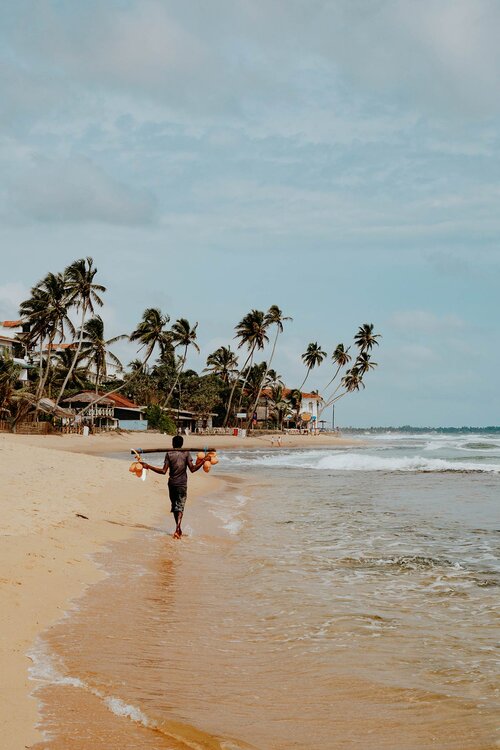
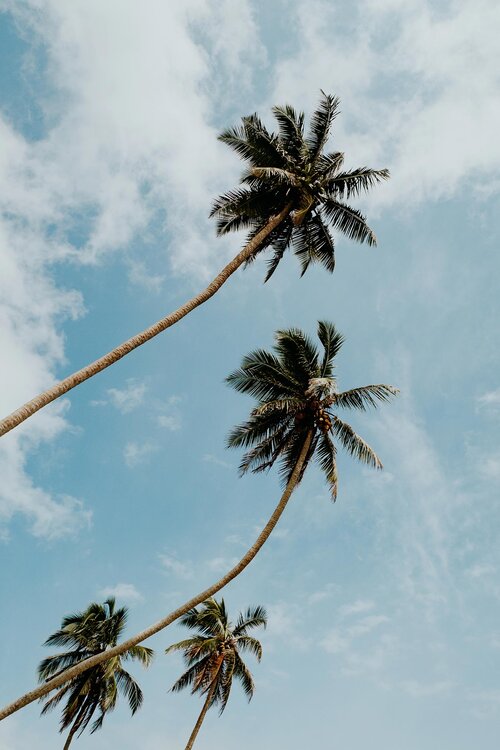
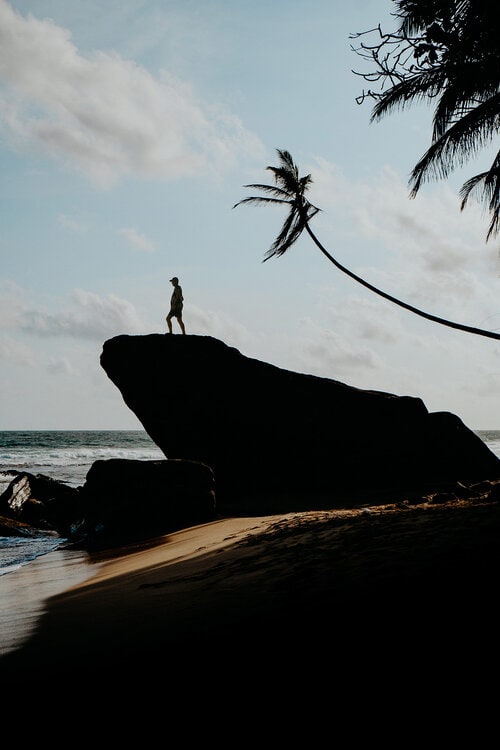
Day 6 – 7 | Mirissa, a tranquil beachside paradise
After unwinding at one of the tropical beaches in Unawatuna, it is time to continue your journey along the island’s beloved south coast.
Mirissa is an energetic beach town that has not gone unnoticed by backpackers and travellers alike. It has, in fact, become quite an unmissable destination in Sri Lanka itineraries.
The beach town is all about riding waves, paradisiac stretches of beach, trendy cafés and the tranquil ambience that characterizes it. But what really highlights Mirissa is that it’s deemed to be one of Sri Lanka’s best places to get up close and personal with Blue Whales.
MIRISSA | MUST-SEE ATTRACTIONS
Coconut Tree Hill | Coconut Tree Hill is without a doubt among the most iconic things to see in Sri Lanka. The tangerine-coloured cliff is extremely popular and well-known for its sea of swaying palms and views over the shimmering Indian Ocean. I’d recommend stopping by earlier in the day or during a glorious sunset.
Parrot Rock | Only just off Mirissa’s main beach is Parrot Rock, a small secluded rock-island that provides the most stunning views over the town’s golden-sanded shoreline. Make sure you climb to the summit, it’s one of Mirissa’s best spots to sit and watch the world go by.
Surfing in Weligama | With decent waves rolling in year-round, Mirissa is one of the leading surf destinations on Sri Lanka’s south coast. The vibrant town is home to excellent surf schools that provide lessons and board rental. The waves in Mirissa are perfect for beginners, intermediate and advanced surfers.
MIRISSA | THE ESSENTIALS
Where | Mirissa
Where to stay in Mirissa | Mirissa has many excellent accommodations and I would highly recommend The Spice House Mirissa and Triple O Six. Alternatively, use booking.com to find accommodation in Mirissa.
How to get from Unawatuna to Mirissa | Jump aboard a direct train from Unawatuna to Mirissa that operates frequently (about 5 times a day). Expect the journey to take around 0.5 – 1 hour.
How to get around Mirissa | Walking around town is your best option as the distances are quite short. For surfing in Weligama, I would recommend taking a tuk-tuk.
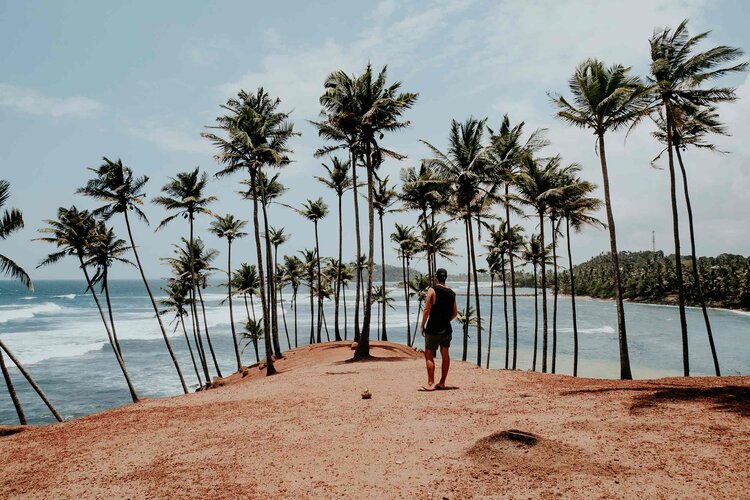
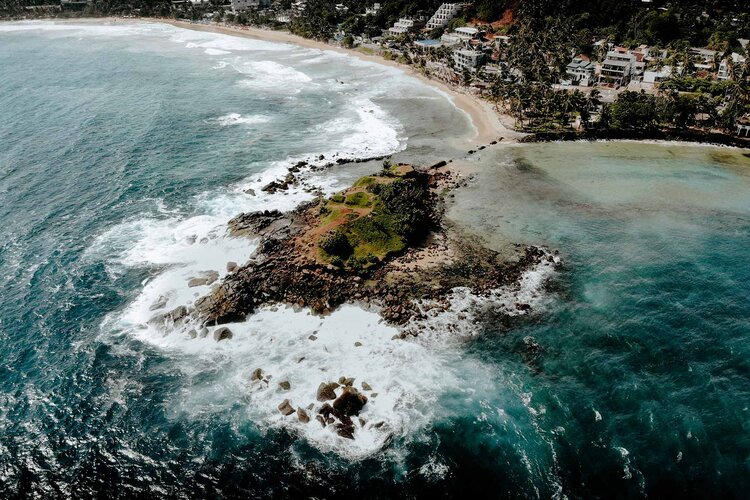
Day 8 | Yala National Park, Sri Lanka’s best safari destination
From the moment I booked my flight to Colombo, I was excited about one specific thing, travelling to the wildlife-rich jungles of the Yala National Park to experience my first-ever safari.
The incredible Yala National Park, situated on the island’s south-eastern coastline, is famed as Sri Lanka’s most popular national park and is unquestionably a must-see on any Sri Lanka itinerary.
The park is home to dense jungles, sandy dunes, wide stretched grasslands and several lakes and lagoons. This distinct landscape is the perfect habitat for a great variety and density of wildlife, which results in the potential sighting of leopards, elephants, Black Sloth bears, Fishing cats, Red Slender loris and crocodiles.
In totality, the national park is home to 44 species of mammals, 215 species of birds and 46 species of reptiles, which makes an excellent reason to jump aboard a jeep and roam around the jungles of the park. Believe me, it’s one of the most fulfilling adventures in Sri Lanka.
It’s easy to book your Yala National Park safari through your accommodation in Tissamaharama. I would recommend joining a morning safari, this increases the potential of leopard sightings.
YALA NATIONAL PARK | THE ESSENTIALS
Where | Yala National Park
Where to stay in Yala National Park | Tissamaharama has great accommodations (both in and outside the park) and I would highly recommend Thaulle Ayurveda Resort and Cinnamon Wild Yala. Alternatively, use booking.com to find accommodations in Yala National Park or Tissamaharama.
How to get from Mirissa to Yala National Park | For this journey, the local bus is the easiest and cheapest option. Head to Matara, and here change to a direct bus to Tissamaharama. The journey can be quite intense and takes around 3.5 hours.
Entrance fee in 2024 | 11.000 LKR, ($37.50) per person.
Half-day jeep safari costs | 14.000 – 17.000 LKR ($47.60 – 57.80) per jeep, with a maximum of 6 people.
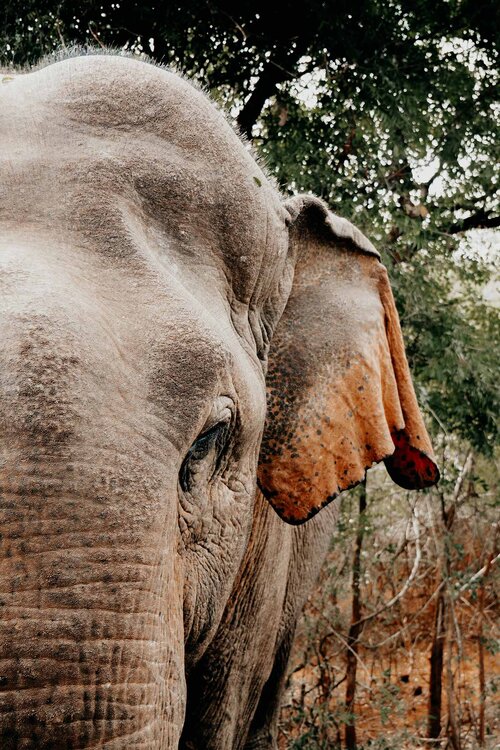
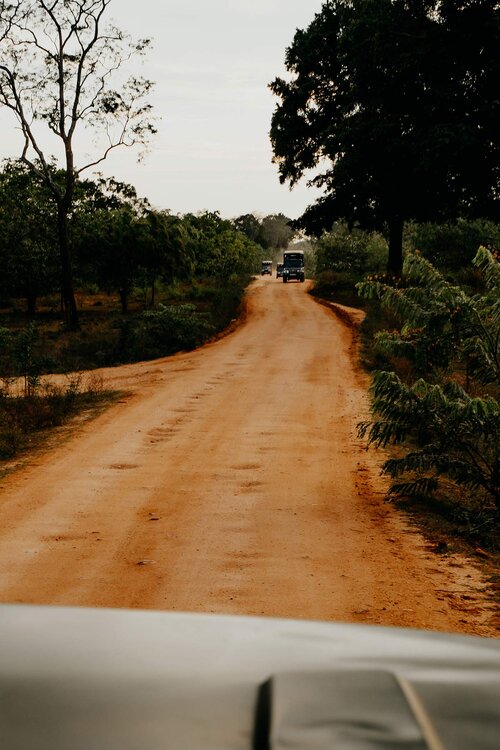
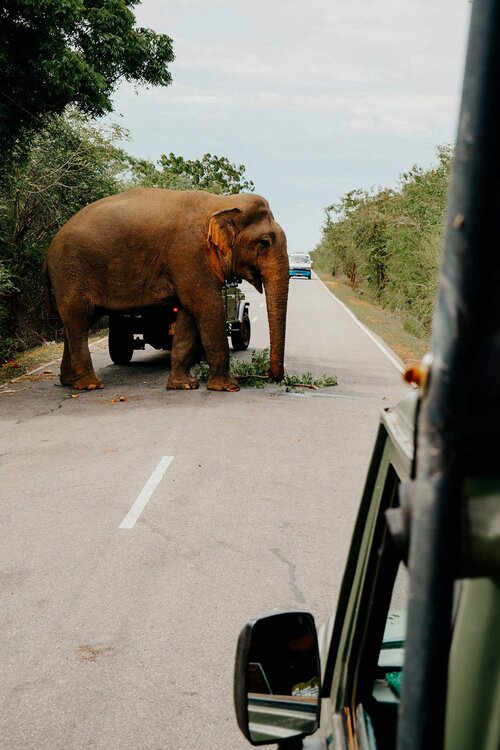
Day 9 – 10 | Arugam Bay, a laidback surfer town
Travelling to Arugam Bay requires quite a long and exhausting journey, as it is pretty off the beaten path compared to other destinations on this Sri Lanka itinerary. That being said, I truly believe that the detour is worth every minute of it.
Slightly hidden on Sri Lanka’s untouched east coast, with Yala National Park as its neighbour, lies Arugam Bay: one of the island’s leading surf destinations. With great bays, excellent surf breaks, stunning natural sceneries, and trendy cafés, there’s enough to see and do in Arugam Bay, therefore, I would recommend staying at least two days.
ARUGAM BAY | MUST-SEE ATTRACTIONS
Kudumbigala Monastery | Just 45 minutes from Arugam Bay’s spirited main street is the Kudumbigala monastery, a sacred place where locals come to practise deep meditation techniques. In addition to those mysterious, spiritual vibrations, you’ll find a viewpoint that provides the most stunning panoramic views of the entire region.
Muhudu Maha Viharaya | Known as the temple of the ocean, Muhudu Maha Viharaya is a charming white Buddhist stupa, overlooking Pottuvil’s sandy dunes and shimmering ocean. Fortunately, the temple is out of range of the regular tourist area, so it gives an authentic glimpse of Sri Lanka’s daily life. As always, follow religious customs and visit in a respectful manner.
Elephant Rock | Acknowledged as one of the best surfing breaks in the area, and a great place to sit and watch the world go by, especially during the golden hour. Elephant Rock gives a marvellous view over the bay and its wave-riding surfers, certainly a must-see in Arugam Bay.
ARUGAM BAY | THE ESSENTIALS
Where | Arugam Bay
Where to stay in Arugam Bay | Arugam Bay has no shortage of great accommodations. For surfing, I’d highly recommend The Spice Trail – another excellent option is Bay Vista. Alternatively, use booking.com to find accommodation in Arugam Bay.
How to get from Yala National Park to Arugam Bay | Local bus is the cheapest option. Do keep in mind that this is one of the most exhausting bus journeys in Sri Lanka – plus it requires changing bus up to three times. Alternatively, hire a tuk-tuk or arrange a taxi with the PickMe app. The journey can take up to 6.5 hours.
How to get around Arugam Bay | If you’re looking to explore the surrounding area, I would highly recommend renting a scooter. Alternatively, walk or make use of tuk-tuks.
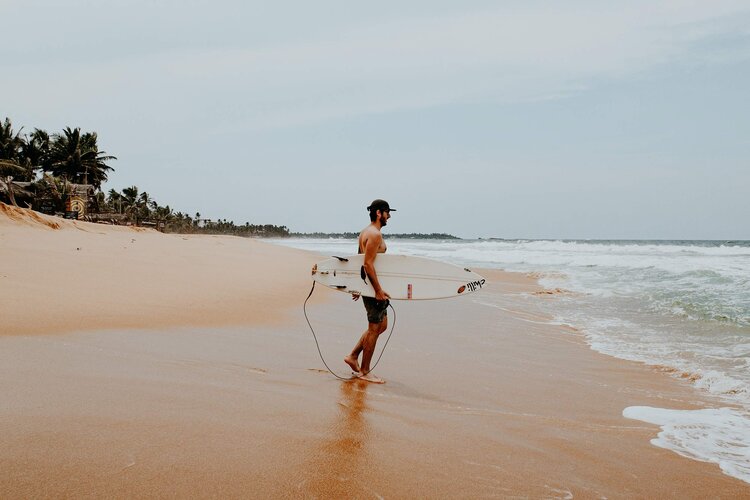
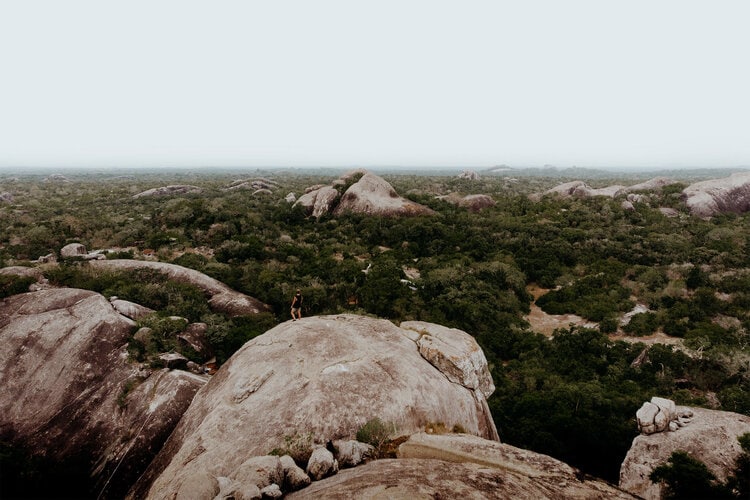
Day 11 – 13 | Ella, Sri Lanka’s extraordinary hill country
After learning to ride the waves in Arugam Bay, it’s time to head for Sri Lanka’s mysterious mountains and one of my favourite places in the country, the sleepy town of Ella.
Around 1,041 metres above sea level and hidden in Sri Lanka’s peaceful hill country is Ella: a small town that is encircled by charming tea plantations, towering mountains and rushing waterfalls.
If you’re a nature & adventure enthusiast like me, Ella’s incredible sceneries will surely blow your mind. I enjoyed this town so much, that I’ve ended up staying slightly longer than initially planned. Therefore I’d always recommend adding some flexibility to your Sri Lanka itinerary.
ELLA | MUST-SEE ATTRACTIONS
Ella Rock | It is no surprise that Ella Rock is one of the must-see attractions in Ella as it provides breathtaking views of Little Adam’s Peak, Ella Gap and the mysterious hill country of Ella. If you’re a seasoned hiker, you certainly feel hyped for the somewhat challenging Ella Rock hike. Do bear in mind that the best time to hike up Ella Rock is around sunrise.
Nine Arch Bridge | The now-famous Nine Arch Bridge is single-handedly responsible for the largest part of travellers that come and visit Ella. Tucked away between the dense jungle and tea plantations; this stunning piece of architecture impresses both travellers and locals on a daily basis. The scene becomes even more remarkable when the famous blue train slowly navigates its way across the bridge.
Little Adam’s Peak | As the name implies, Little Adam’s Peak is named after its taller and better-known brother, Adam’s Peak. The hike to the summit of Little Adam’s Peak guarantees the most excellent overview of both Ella Rock and the infinite-looking Ella Gap. It’s therefore little wonder that it’s such a popular attraction in Ella.
ELLA | THE ESSENTIALS
Where | Ella
Where to stay in Ella | Ella has some of Sri Lanka’s finest accommodations and I would recommend Rawana Den, 98 Acres & Spa and Mountain Heavens. Alternatively, use booking.com to find accommodation in Ella.
How to get from Arugam Bay to Ella | Take a bus to Monoragala, before changing to the bus that heads for Wellawaya. Here take the bus to Ella. If you’re fortunate, you may catch a direct bus between Arugam Bay and Wellawaya. Since the journey is quite chaotic, alternatively hire a tuk-tuk or arrange a taxi with PickMe. The journey can take up to 4.5 hours.
How to get around Ella | Ella is an easy town to navigate by foot. Alternatively, jump aboard one of the many tuk-tuks.
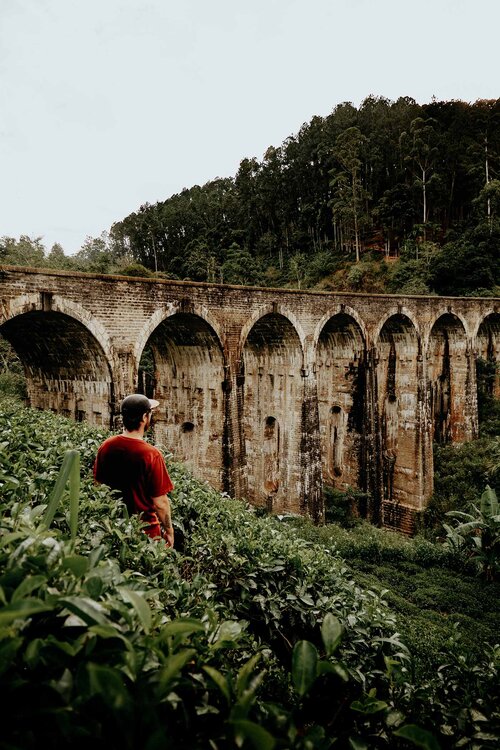
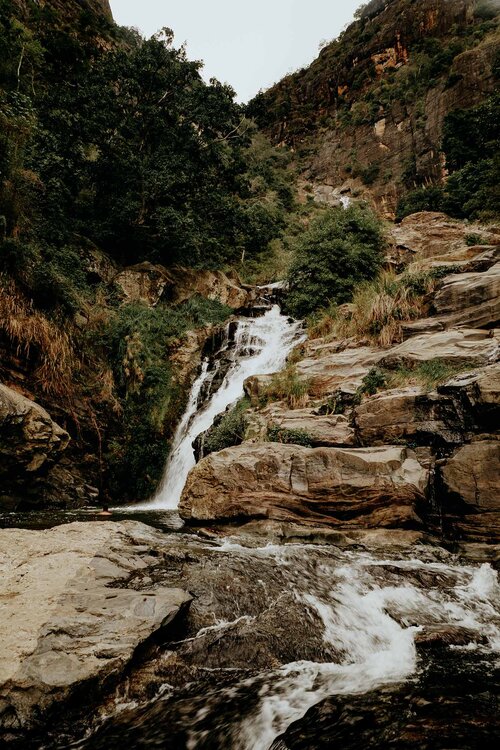
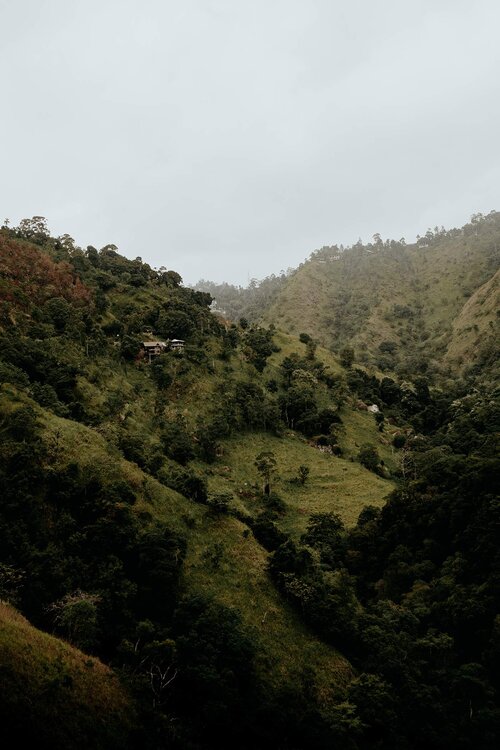
Ella to Kandy, the most scenic train ride in the world
Ask anyone who jumped aboard the famous Ella to Kandy train and they all answer the same – this scenic train journey is one of the absolute highlights in any Sri Lanka itinerary.
Secure yourself a window seat and witness the train meandering through mysterious woodlands, authentic local towns and leafy tea plantations. This seven-hour journey is one of the most spectacular train rides in the world, so make sure you enjoy every moment of it.
ELLA TO KANDY TRAIN JOURNEY | THE ESSENTIALS
Where | Ella Railway Station
Costs | 2nd class: 270 LKR ($1.50), 3rd class: 180 LKR ($1). If you prefer to book your ticket in advance, visit 12go.asia.
Train times from Kandy to Ella | 06:40, 09:24, 10:57 and 12:48. For up-to-date timetables, visit the Seat61 website.
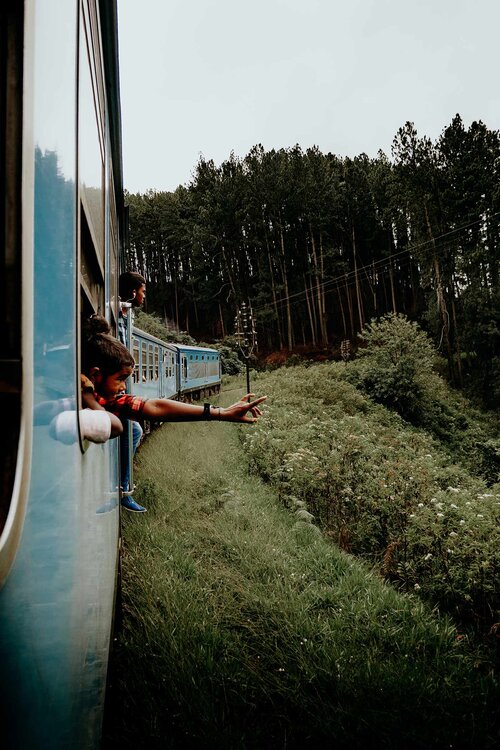
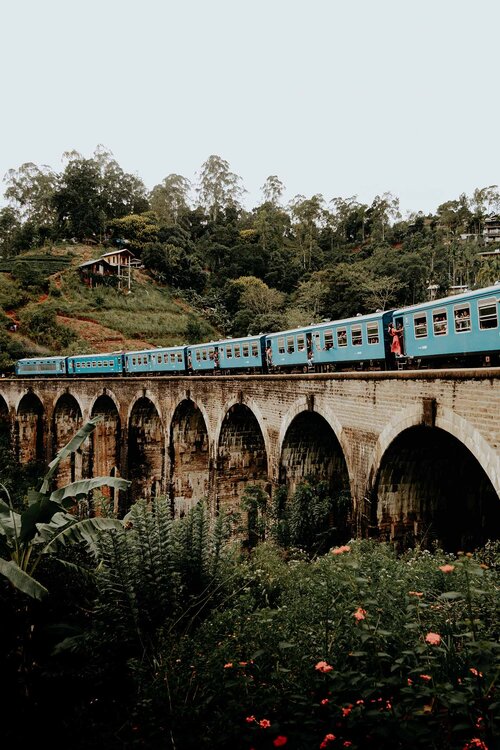
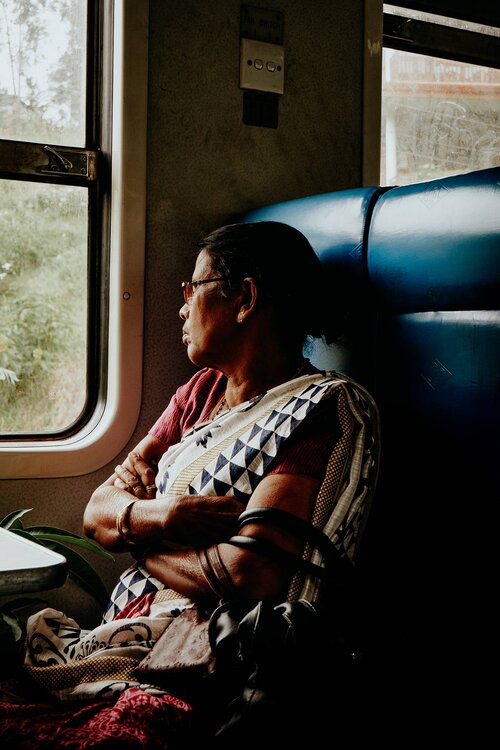
Day 14 – 15 | Kandy, the city of kings
Following the breathtaking train journey, you’ll arrive in Kandy, a vibrant city that is of major significance to Sri Lanka’s rich, captivating culture and history. It is, therefore, more than rightly so named, the city of kings by its locals.
Sri Lanka’s second-largest city is famed for its most important spiritual site, the Temple of the Sacred Tooth Relic; which according to Sri Lankan legends houses a tooth of the Buddha.
Although many travellers tend to visit Kandy in a hurry, I think there are quite a few fascinating places to see and appreciate in Kandy. I would highly recommend spending at least two days exploring the lively city and surroundings.
KANDY | MUST-SEE ATTRACTIONS
Temple of the Sacred Tooth Relic | Right at the heart of Kandy and next to the Kandy Lake is the Temple of the Tooth Relic, Sri Lanka’s most important Buddhist shrine. The best time to visit is during a Buddha Puja ceremony, when pilgrims from all over the world reflect, sing and bring offerings to deepen the appreciation of the Buddha and his teachings.
Royal Botanical Gardens of Peradeniya | For me, it’s always impressive to see a large urban city park in the midst of a lively city, the Royal Botanic Gardens of Peradeniya is exactly that. The verdant gardens are home to over 4,000 species of plants, including palm trees, medicinal plants, orchids and spices. A peaceful morning walk is a perfect activity to escape the sizzling heat and chaos of Kandy.
Bahirawakanda Temple | Located atop the Bahirawa Kanda hill and to be seen from the whole of Kandy lies the majestic Bahirawakanda Temple. The towering Buddha reaches a height of 27 metres and is considered one of the largest Buddha statues in Sri Lanka. Make sure you snap some shots of the panoramic views of Kandy.
KANDY | THE ESSENTIALS
Where | Kandy
Where to stay in Kandy | I stayed at Range Hotel Kandy and Cafe Aroma Inn. Additionally, I would recommend Dumbara Peak Residence. Alternatively, use booking.com to find accommodation in Kandy.
How to get from Ella to Kandy | Jump aboard the famous Ella to Kandy train. It’s cheap and considered the most scenic train ride in the world – 2nd class: 270 LKR ($1.50), 3rd class: 180 LKR ($1). If you prefer to book your ticket in advance, visit the 12go.asia website.
How to get around Kandy | Kandy is easily explored by foot. I’d recommend grabbing a tuk-tuk for attractions that are situated just outside the town.
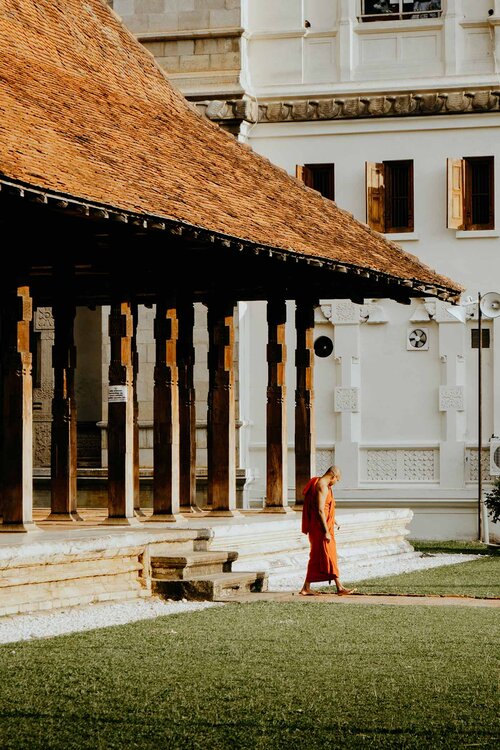
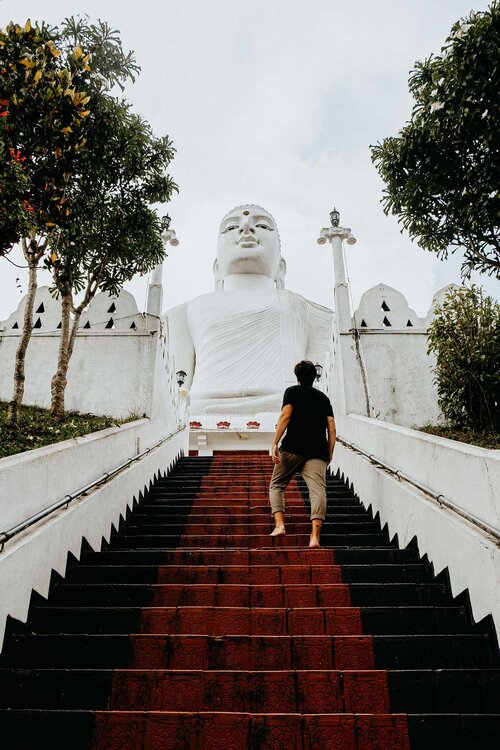
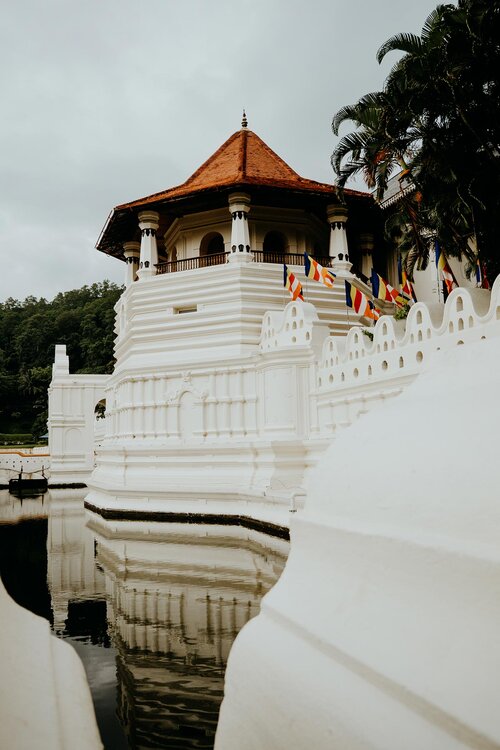
Day 16 – 17 | Sigiriya, Sri Lanka’s eight wonder of the world
It’s time to head further North to the Ancient City of Sigiriya, one of my all-time favourite places in Sri Lanka, and an unmissable destination on this itinerary.
It is little surprise that Sigiriya is loved by so many, it has essentially everything a traveller yearns for. The town is surrounded by nature, has no shortage of breathtaking sceneries and houses the authentic ambience of a local village.
The real draw though is the Ancient Sigiriya Rock Fortress, one of the country’s most famous landmarks, and often stated as the eighth wonder of the world.
It is safe to say that being surrounded by Sigiriya’s idyllic nature has a therapeutic effect on both body and mind. Therefore, I’d recommend spending a few days to explore and unwind in this magnificent area.
SIGIRIYA | MUST-SEE ATTRACTIONS
Sigiriya Rock Fortress | Sigiriya’s natural beauty is unrivalled – and that is largely by means of the Sigiriya Rock Fortress. Witnessing this unique, ancient fortress, should be on every Sri Lanka bucket list, whether viewed from Pidurangala Rock or up close and personal.
Pidurangala Rock | The Sigiriya Rock Fortress might be the number one attraction in Sigiriya, it’s the incredible view from Pidurangala Rock that stole my heart. Hiking the summit of Pidurangala Rock has rapidly become a must-do activity for travellers and locals alike. To experience the mesmerizing view at its full potential, make sure to visit at sunrise or sunset.
SIGIRIYA | THE ESSENTIALS
Where | Sigiriya
Where to stay in Sigiriya | I stayed at Hotel Sigiriya multiple times and I felt at home every single time. If you’re a creative like me, this is an inspiring place where you surely want to stay. Alternatively, use booking.com to find accommodation in Sigiriya.
How to get from Kandy to Sigiriya | Take a bus to Dambulla, where you change for the bus that heads to Sigiriya. Alternatively, hire a tuk-tuk from Dambulla to Sigiriya (1,000 LKR – $5.50). The journey takes around 2.5 hours.
How to get around Sigiriya | Walking around town is your best option as the distances are quite short. Do be aware that elephants often roam around the jungles. Alternatively, hire a bicycle to explore the stunning surroundings.
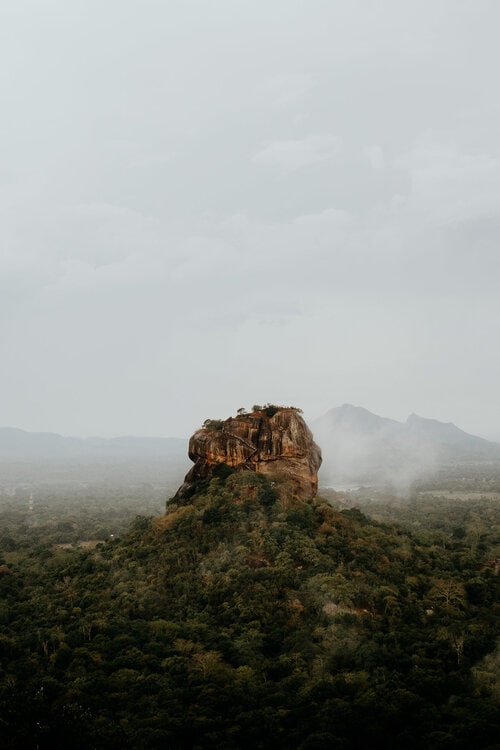
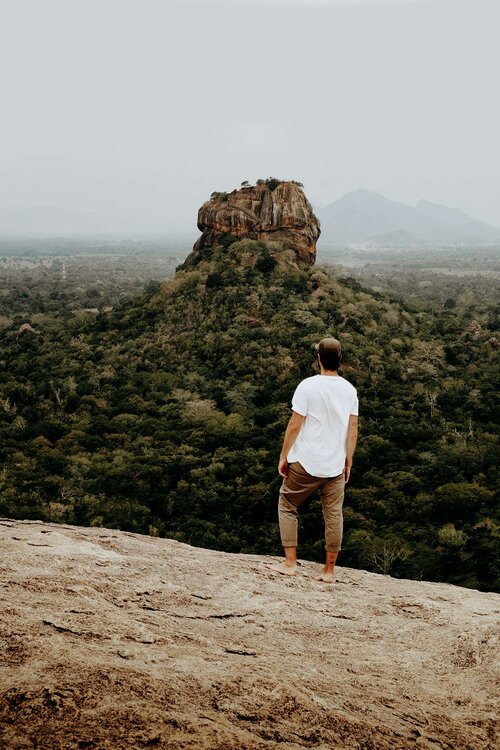
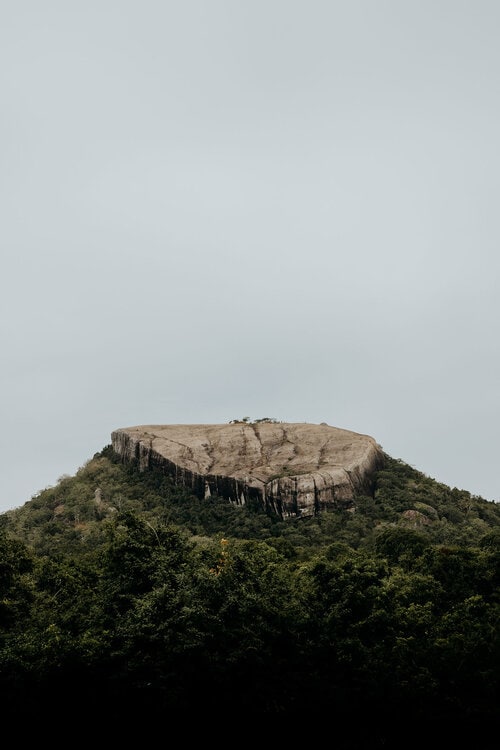
Day trip | Kaudulla National Park | The gathering of Elephants
Sigiriya is conveniently located and makes the perfect base for an exciting day trip: a jeep safari in Kaudulla National Park.
Poised between Sigiriya and Trincomalee, Kaudulla National Park is one of Sri Lanka’s best national parks, and home to over 200 wild elephants, including a newborn. The extensive wildlife park is often referred to as; The Gathering, the world’s largest gathering of Asian elephants.
It’s easy to book your Kaudulla National Park safari through your accommodation in Sigiriya. I would recommend joining an afternoon safari, right after you spend the morning visiting Sigiriya Rock Fortress or Pidurangala Rock.
KAUDULLA NATIONAL PARK | THE ESSENTIALS
Where | Kaudulla National Park
How to get from Sigiriya to Kaudulla National Park | By safari jeep. A safari tour always includes pick-up and drop-off at your accommodation.
Entrance fee in 2024 | 7.350 LKR ($25).
Half-day jeep safari costs | 9,500 – 10900 LKR ($32.50 – 37.50) per jeep, with a max of 6 people.
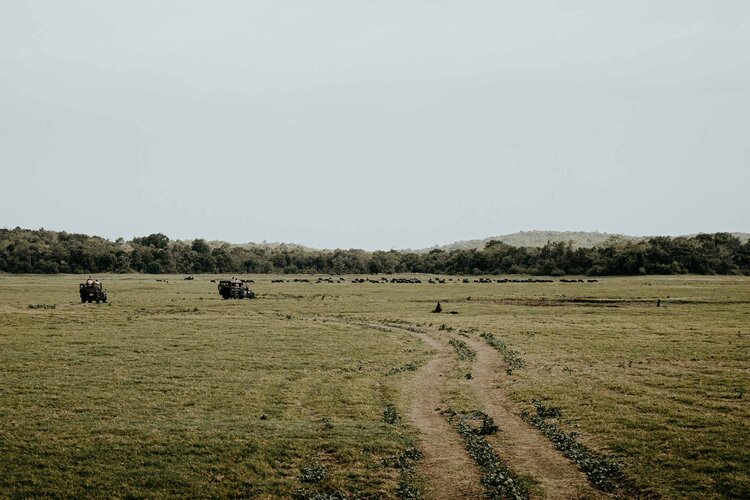
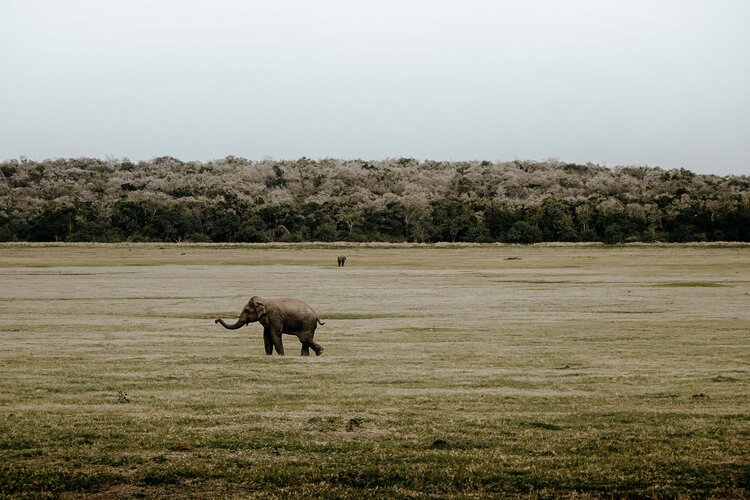
Day 18 | Polonnaruwa, Sri Lanka’s ancient capital city
Part of Sri Lanka’s glorious cultural triangle and only an hour away from Sigiriya is the ancient city of Polonnaruwa, an impressive UNESCO World Heritage site that makes for one of the best stops on any Sri Lanka itinerary.
Present-day, this ancient city has no shortage of grandeur, whether it’s the remains of temples and religious buildings, impressive shrines, or elegant Buddha statues. The ancient city of Polonnaruwa features some of the most impressive ruins in Sri Lanka – which is a true pleasure to seasoned travellers.
I’ve heard many backpackers who experience difficulties when choosing between Anuradhapura and Polonnaruwa. When I followed my intuition and chose Polonnaruwa, it felt like the right decision, and up until this day, I’m still delighted with it – even after visiting the Angkor temples in Cambodia.
POLONNARUWA | THE ESSENTIALS
Where | Polonnaruwa
Entrance fee | Adult 4,550 LKR ($25), children 2,275 LKR ($12.50).
Opening hours | 07:00 – 18:30 daily.
Where to stay in Polonnaruwa | I stayed at Hotel Lake Park and would additionally recommend Giritale Hotel and Mahanuge Hotel Polonnaruwa. Alternatively, use booking.com to find accommodation in Polonnaruwa.
How to get from Sigiriya to Polonnaruwa | Take the local bus to Inamaluwa, before changing to a direct bus that heads for Polonnaruwa. The journey should take no longer than 1.5 hours.
How to get around Polonnaruwa | The most fun way to explore Polonnaruwa is by bicycle. Alternatively, hire a tuk-tuk that guides you around the complex.
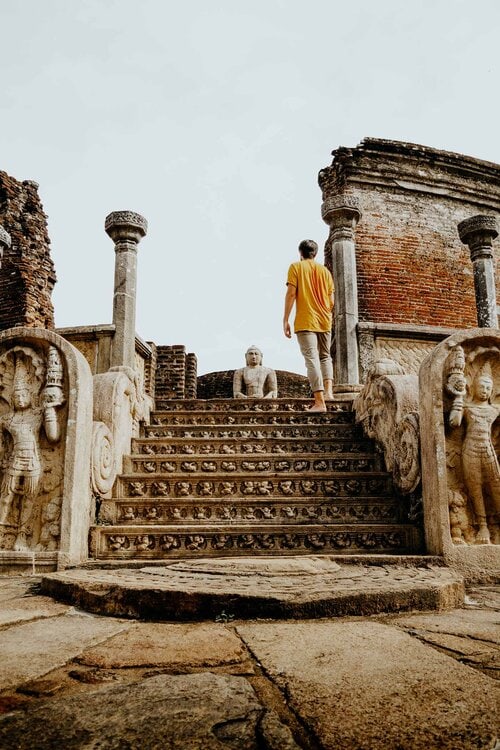
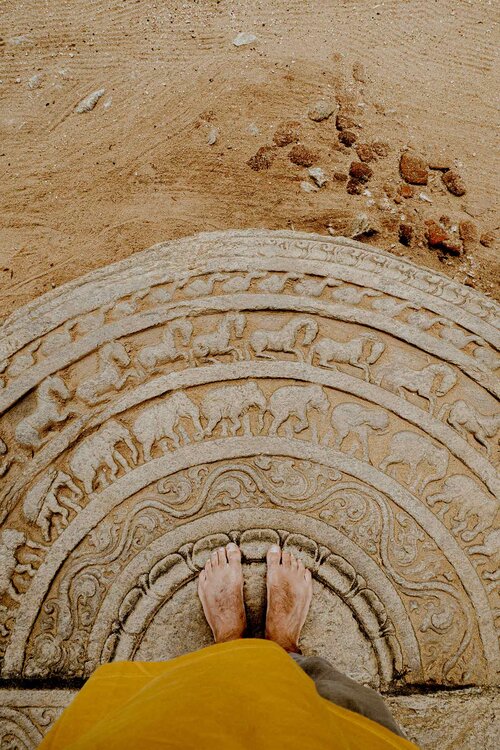
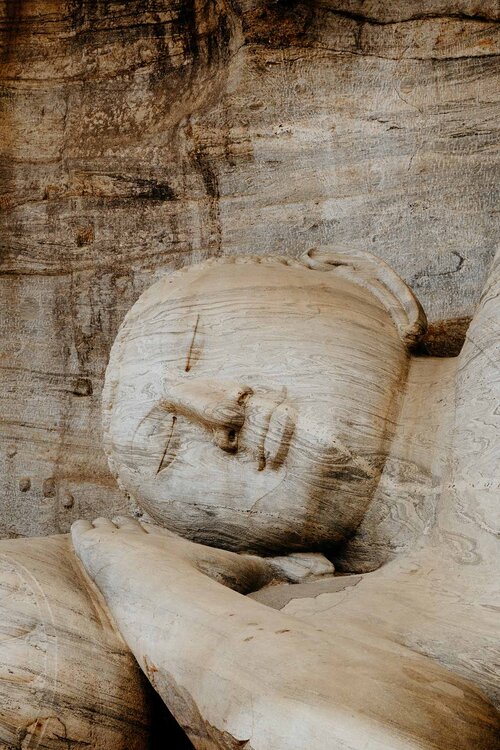
Day 19 – 20 | Trincomalee, Sri Lanka’s undiscovered East coast
After soaking up all that Polonnaruwa has to offer, it’s time to venture further east to the pristine, undiscovered beaches of Trincomalee and surrounds.
Trincomalee, often called Trinco by the locals, is a relaxed coastal town that is less frequently visited by travellers and backpackers alike. Even so, I sincerely feel that its beaches aren’t inferior to most of the must-see beaches on Sri Lanka’s beloved south coast.
But what really distinguishes Trincomalee is the fact that it’s deeply influenced by Tamil culture, resulting in a completely different atmosphere than elsewhere on the island. Trinco is thus, no stranger to vivid, breathtaking Hindu temples, and I would highly recommend attending at least one of them.
TRINCOMALEE | MUST-SEE ATTRACTIONS
Koneswaram Temple | The colourful Koneswaram Temple holds the upper area of Fort Frederick and is a must-see in Trincomalee. The fascinating temple is dictated by its main shrine, a large vivid statue of the Hindu god Shiva, and faces one of the world’s largest natural harbours. If you plan to visit, remember to respect religious customs.
Nilaveli Beach | Just 20 minutes north of Trincomalee you’ll find Nilaveli Beach, a secluded beach that is said to be among the best beaches in Sri Lanka. The sleepy town and its eponymous beach are still largely undiscovered to backpackers and houses an authentic local atmosphere. Nilaveli may be a little off the beaten path, but it is worth visiting, and a great place to grab a coconut while watching the world go by.
Sri Pathirakali Amman Kovil | Trinco may be renowned for its pristine beaches, it is the incredibly ornamented Hindu temples that amazed me the most. Established adjacent to the Trinco bus station is one of them, the Sri Pathirakali Amman Kovil, a work of art that is dedicated to the Hindu goddess Bhadrakali. To fully experience the temples, I’d recommend taking a peaceful walk in and around the buildings.
TRINCOMALEE | THE ESSENTIALS
Where | Trincomalee
Where to stay in Trincomalee | Trincomalee has excellent accommodations and I would highly recommend Amaranthe Bay Resort & Spa and Trinco Blu by Cinnamon. Alternatively, use booking.com to find accommodation in Trincomalee.
How to get from Polonnaruwa to Trincomalee | From Polonnaruwa’s main station, take the local bus to Habarana, before changing to a direct bus that heads for Trincomalee. The journey takes around 3.5 hours.
How to get around Trincomalee | If you’re looking to explore the surrounding area, I would highly recommend renting a scooter. Alternatively, go walking or hire one of the many tuk-tuks.
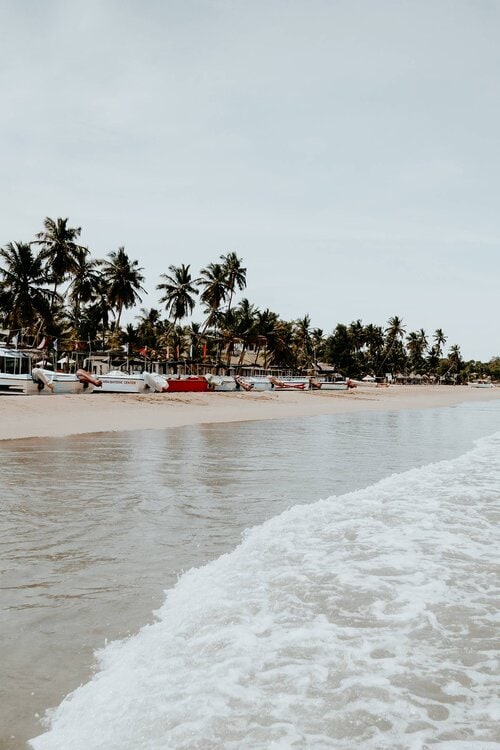
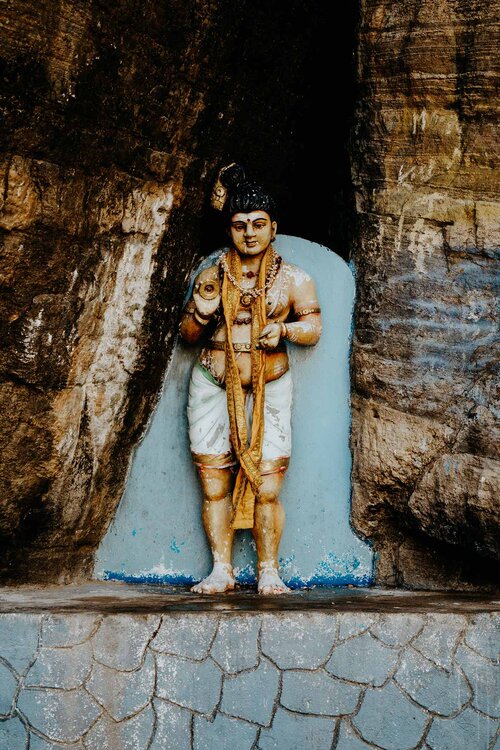
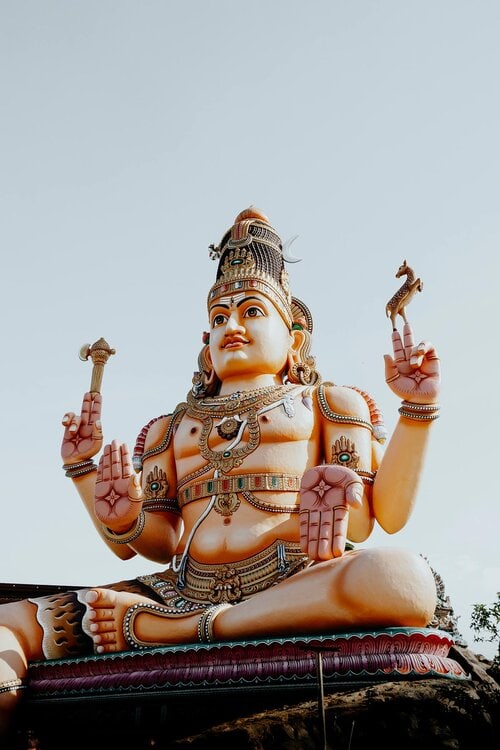
Day 21 | Negombo, time to leave Sri Lanka
It’s time to leave Trinco and board the train that brings you from Trincomalee to Negombo (departs once a day at 06:50).
This scenic train journey is the last glimpse you’ll have of this unique, captivating country. It’s a great moment to reflect and appreciate the fascinating adventures you’ve had during your 3 weeks in Sri Lanka.
To avoid unnecessary problems, make sure you arrive in Negombo one day prior to your return flight. By doing so, you ensure yourself a stress-free journey to the airport.
NEGOMBO | THE ESSENTIALS
Where to stay in Negombo | The last night before a flight, I always try to pick the most comfortable, budget-friendly accommodation possible. For Negombo, I would highly recommend Ayur Ayur Resort & Ayurveda Retreat. Alternatively, use booking.com to find accommodation in Negombo.
How to get from Trincomalee to Negombo | Take the direct train from Trincomalee station to Gampaha station. From there, hire a tuk-tuk or arrange a taxi with the PickMe app to bring you to your accommodation in Negombo. The journey can take up to 9 hours.
Train times from Trincomalee to Negombo | Train departs once daily, 06:50. To avoid unnecessary problems, make sure you arrive in Negombo one day prior to your return flight.
Sri Lanka itinerary | The essentials
Weather in Sri Lanka | The best time to visit Sri Lanka
Although Sri Lanka is just a small island, it is quite a challenge to figure out the best time to visit.
Sri Lanka’s weather is somewhat confusing and dictated by two individual monsoon seasons, and since they alternate, it’s important to plan where you want to go. Due to this distinct climate, there’s always a part with good weather, making Sri Lanka a year-round travel destination.
May – September | The absolute best time to go and visit Sri Lanka’s undiscovered northern and eastern areas.
December – March | Sri Lanka’s popular south and central areas have excellent weather this time of year.
I did this Sri Lanka itinerary in September and was lucky to enjoy the best of both worlds. That said, be aware that travelling during the shoulder season doesn’t always ensure good weather.
Money essentials | The currency in Sri Lanka
Sri Lanka’s official currency is the Sri Lankan Rupee, a currency that is indicated by LKR and Rs. The notes that are currently in circulation include Rs10, Rs20, Rs50, Rs100, Rs500, Rs1000, Rs2000 and Rs5000. Make sure you have enough notes in lower denominations, especially if you plan to stroll the markets and hire tuk-tuks.
Exchanging currency in Sri Lanka | I would sincerely recommend you avoid buying Sri Lankan Rupees either ahead of time or at the airport. I made the mistake of buying upfront, and since the Rupee isn’t rated as a major currency, I ended up getting a bad exchange rate.
The exchange rate at the time of writing – November 2024 | $1 equals 294 LKR, and €1 equals 315 LKR. For up-to-date exchange rates, visit the XE website.
ATMs in Sri Lanka | ATM services are found throughout most popular tourist areas and work well. To avoid unnecessary costs, I’d highly recommend choosing the local currency when withdrawing money.
Fee-free ATM | I used The People’s Bank on many occasions, and had no commission whatsoever.
Stay safe in Sri Lanka | Travel insurance
Though Sri Lanka is perfectly safe for travellers, I always strive to sort out my travel insurance before arriving in a foreign country, and I highly advise anyone else to do the same.
Where we prefer that everything goes smoothly during our travels, something unfortunate can happen at any moment, whether it’s an injury or an accident on the road. When that happens, it is better to be safe than sorry.
Heymondo | Whether you’re going on a 3-week backpacking trip, or planning a long stay somewhere abroad, Heymondo has excellent insurance options either way – plus full COVID-19 coverage and a handy app with 24-hour medical assistance. Readers of WTSW receive 5% off any insurance policy, more information here.
Cheers!
I’ve been on this travel blogging journey since 2019.
If you appreciate what I do here, these are some ways you can support me.
